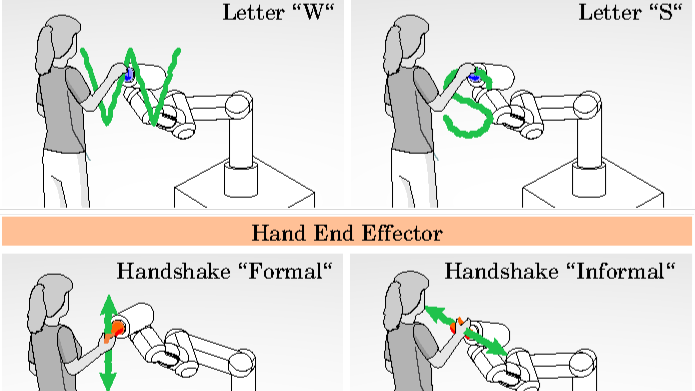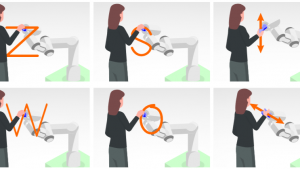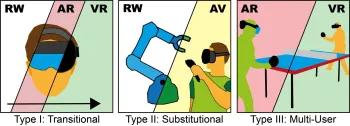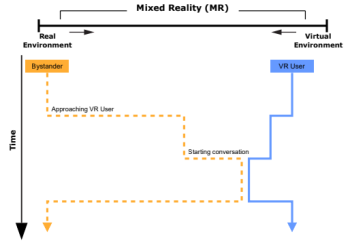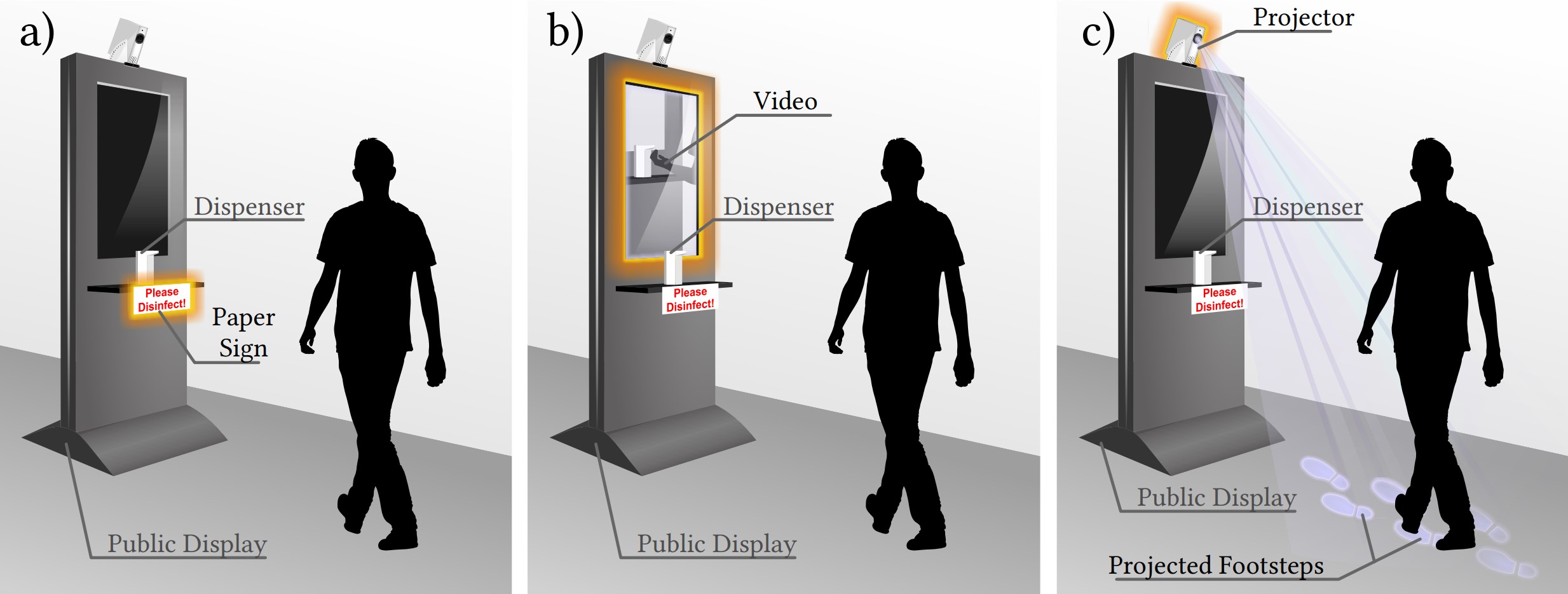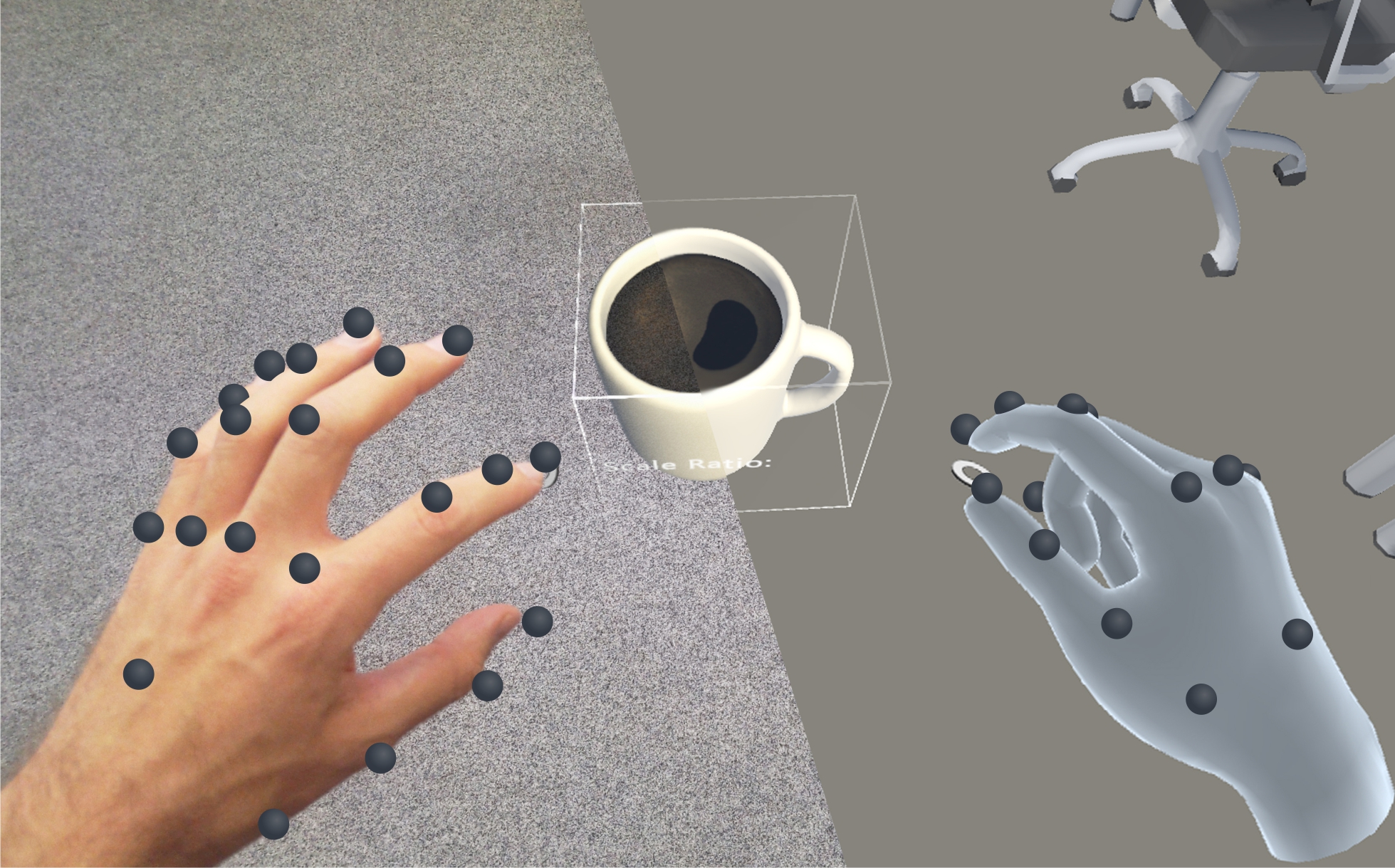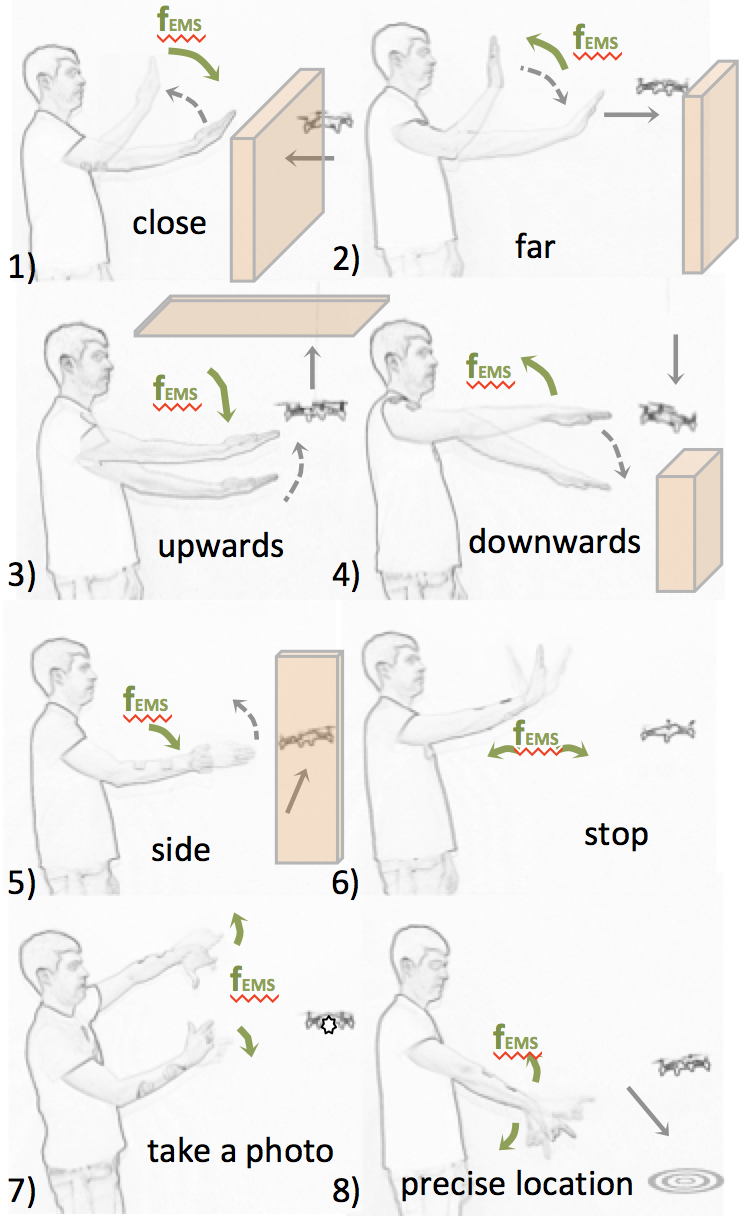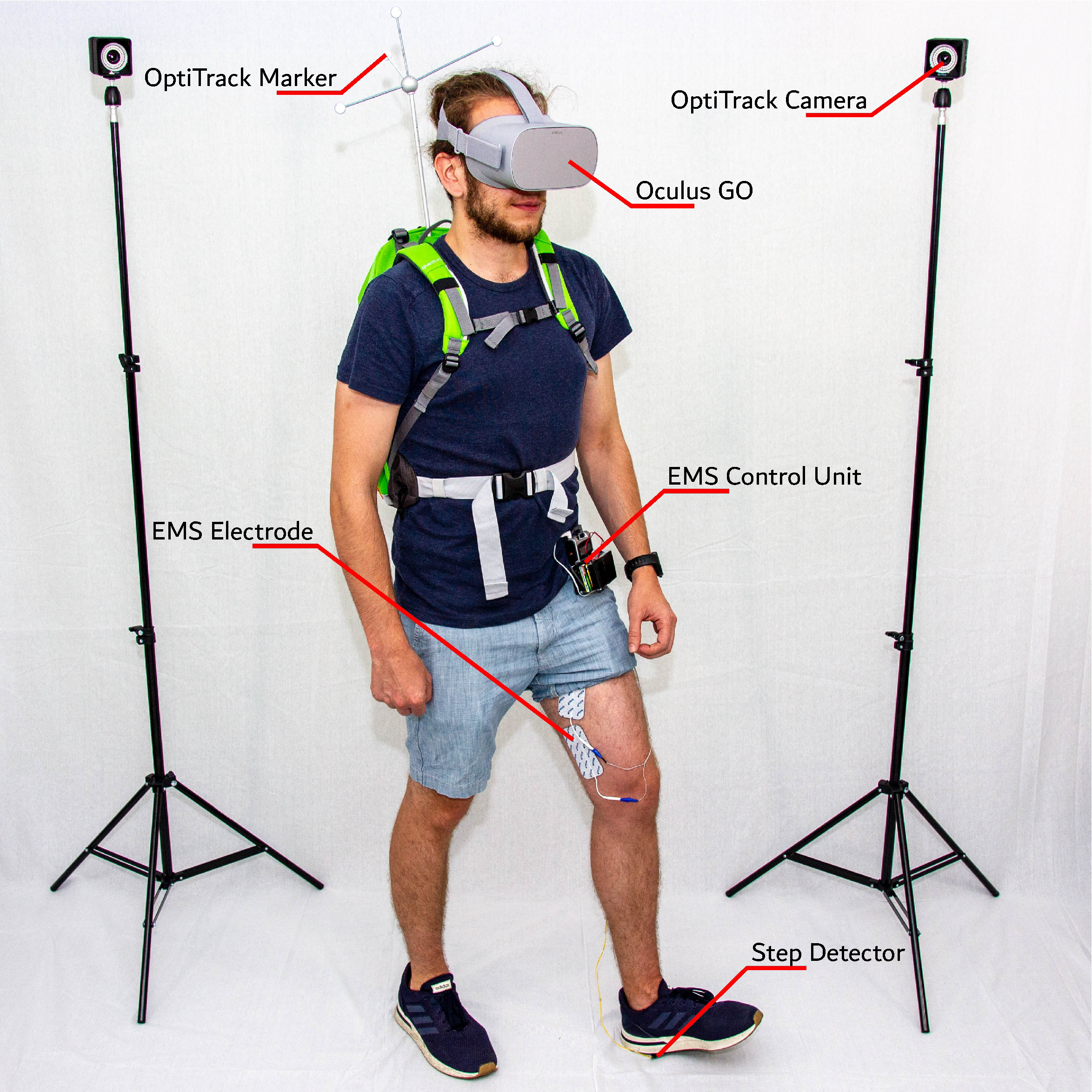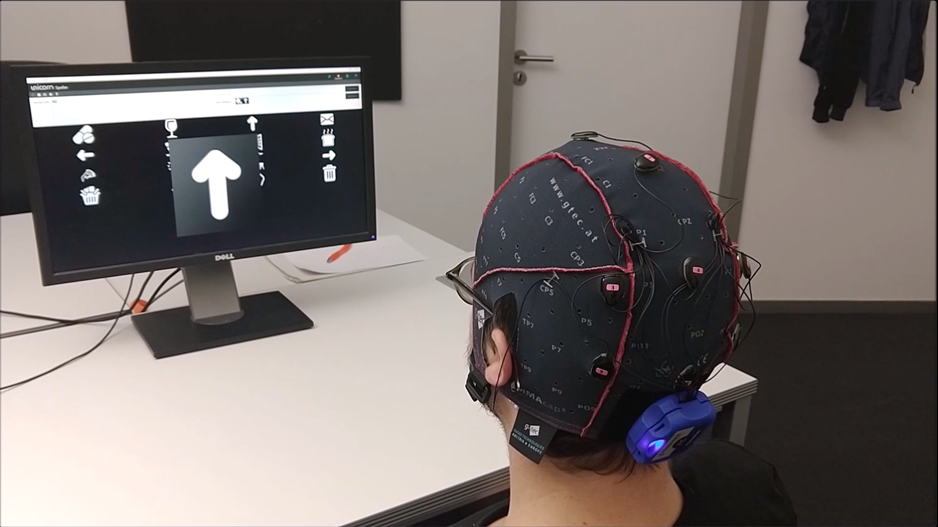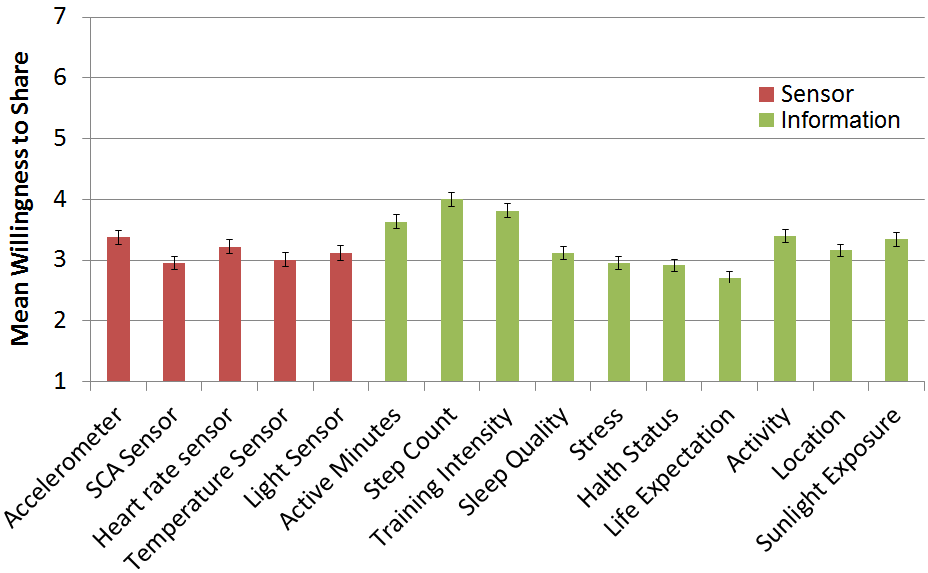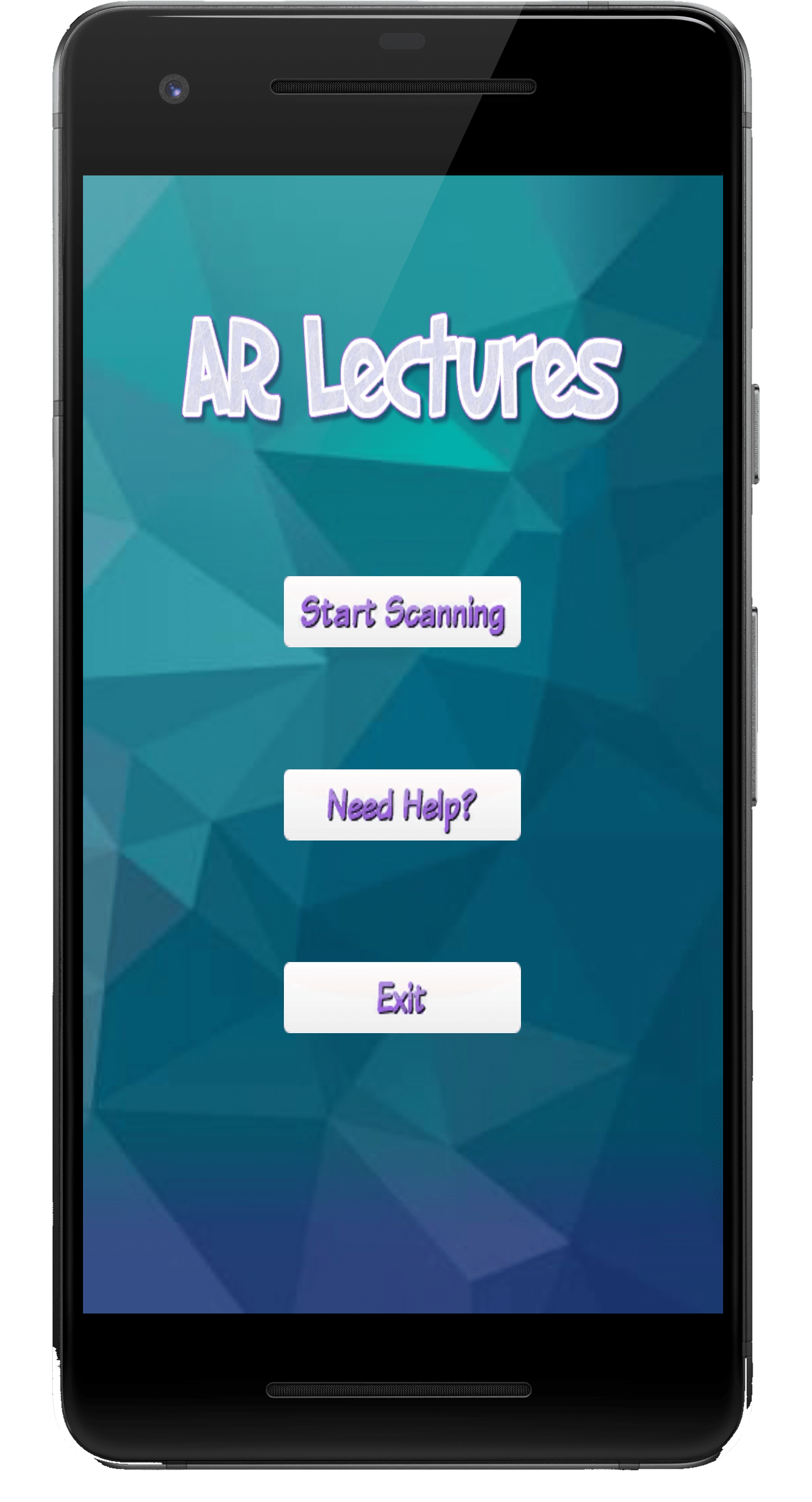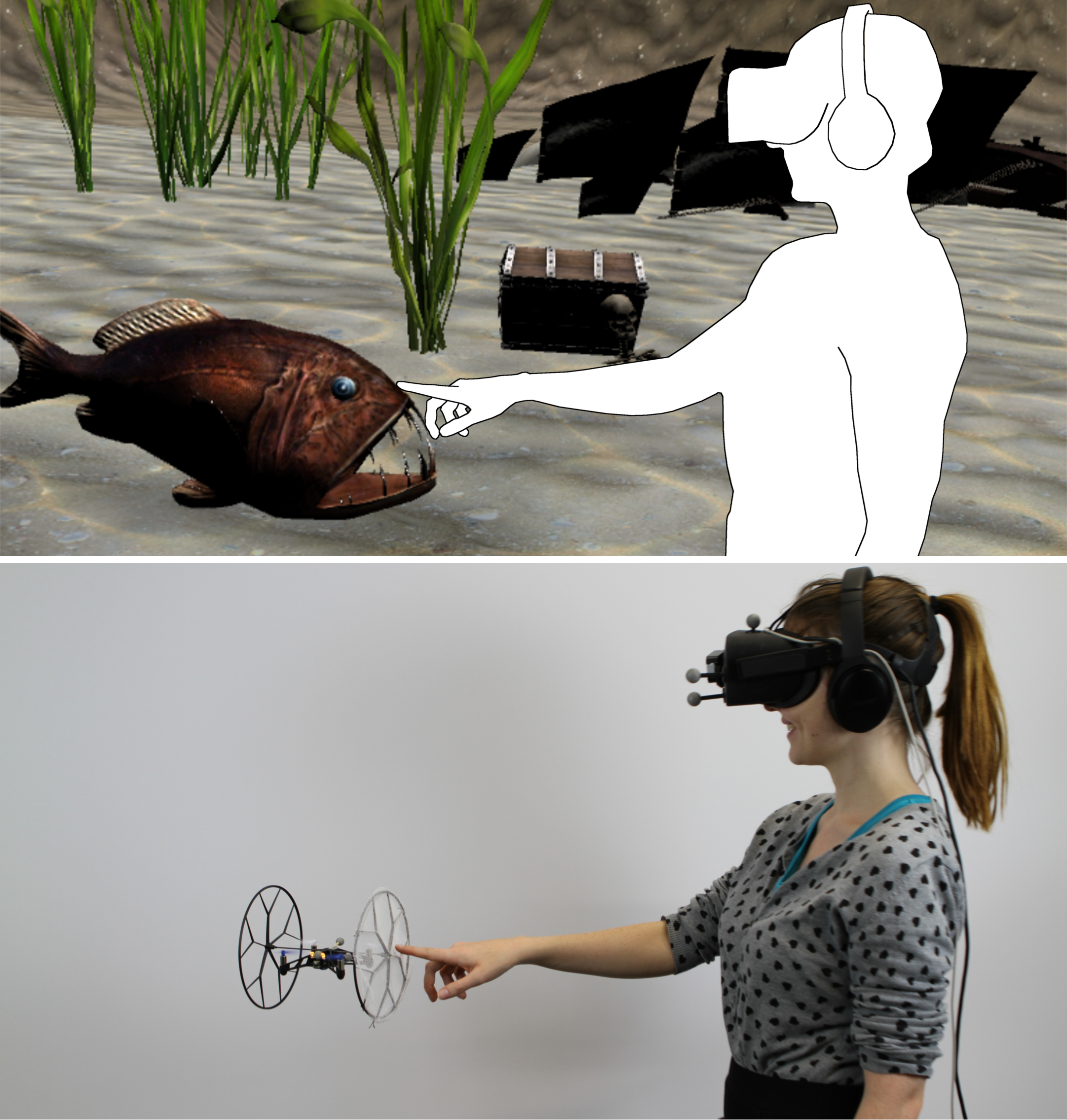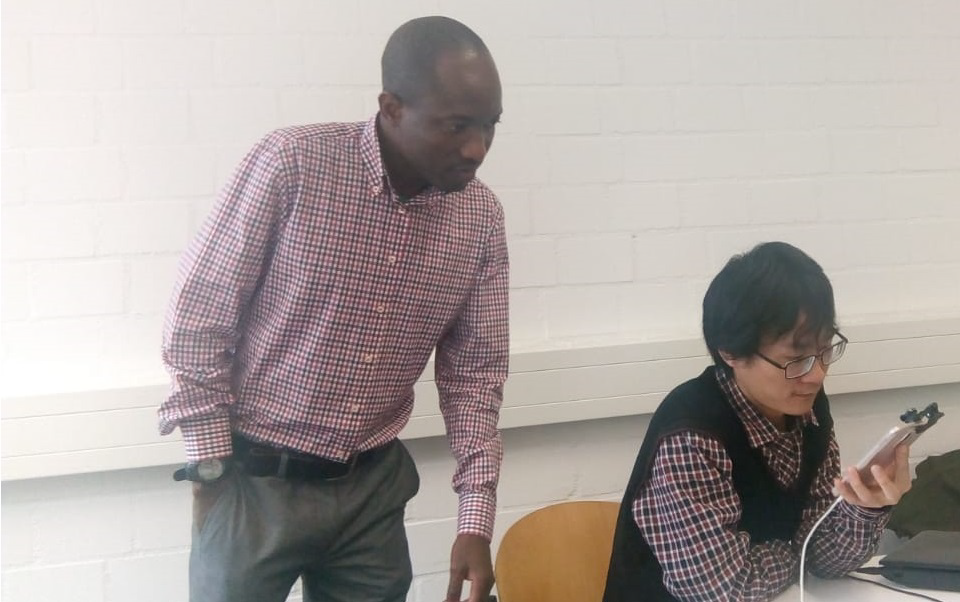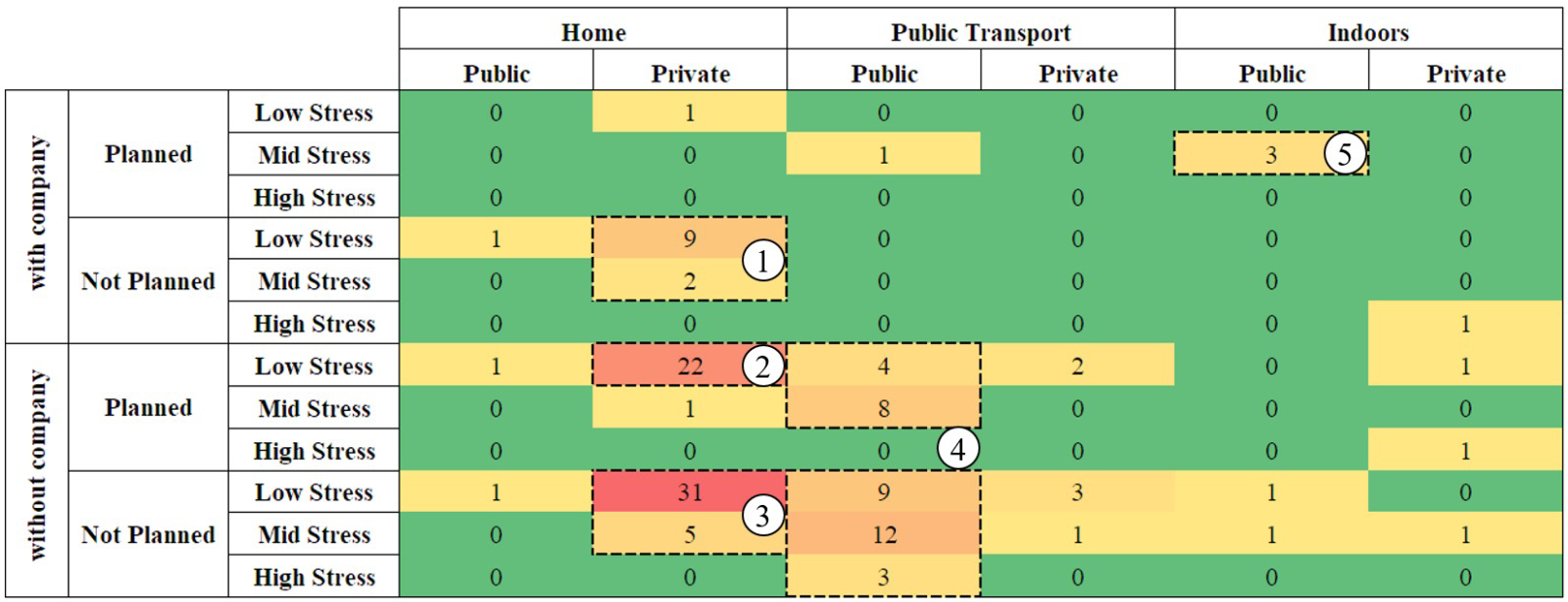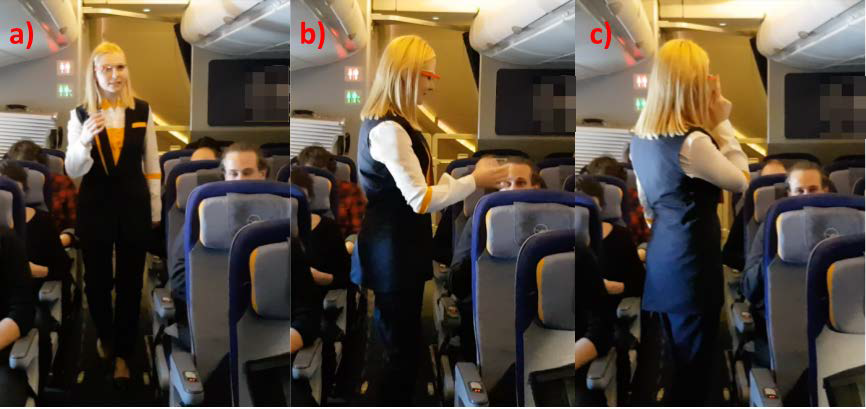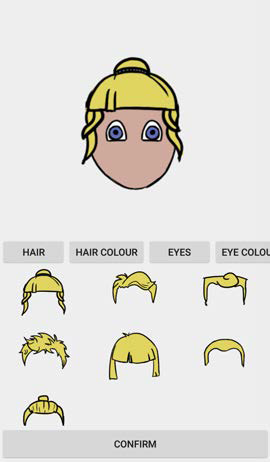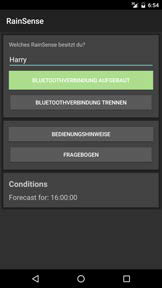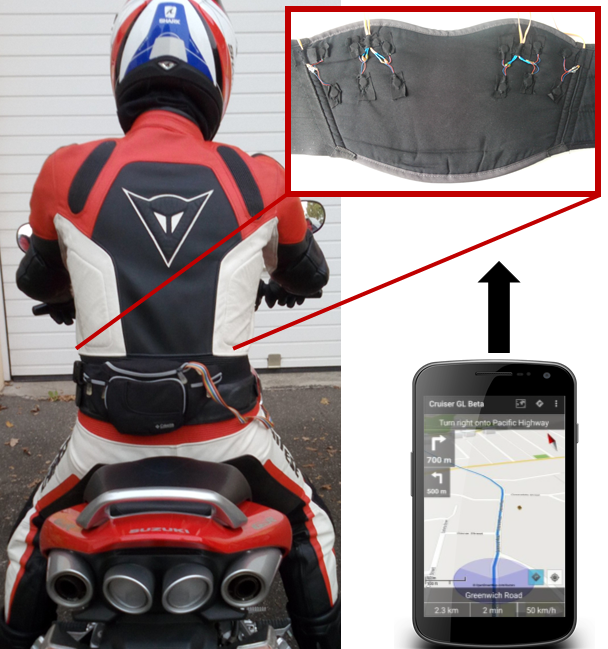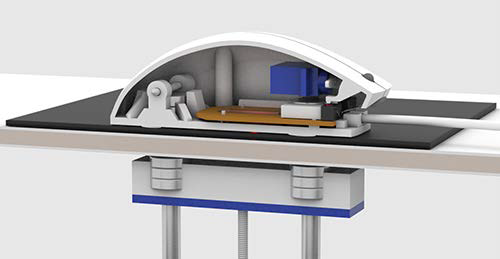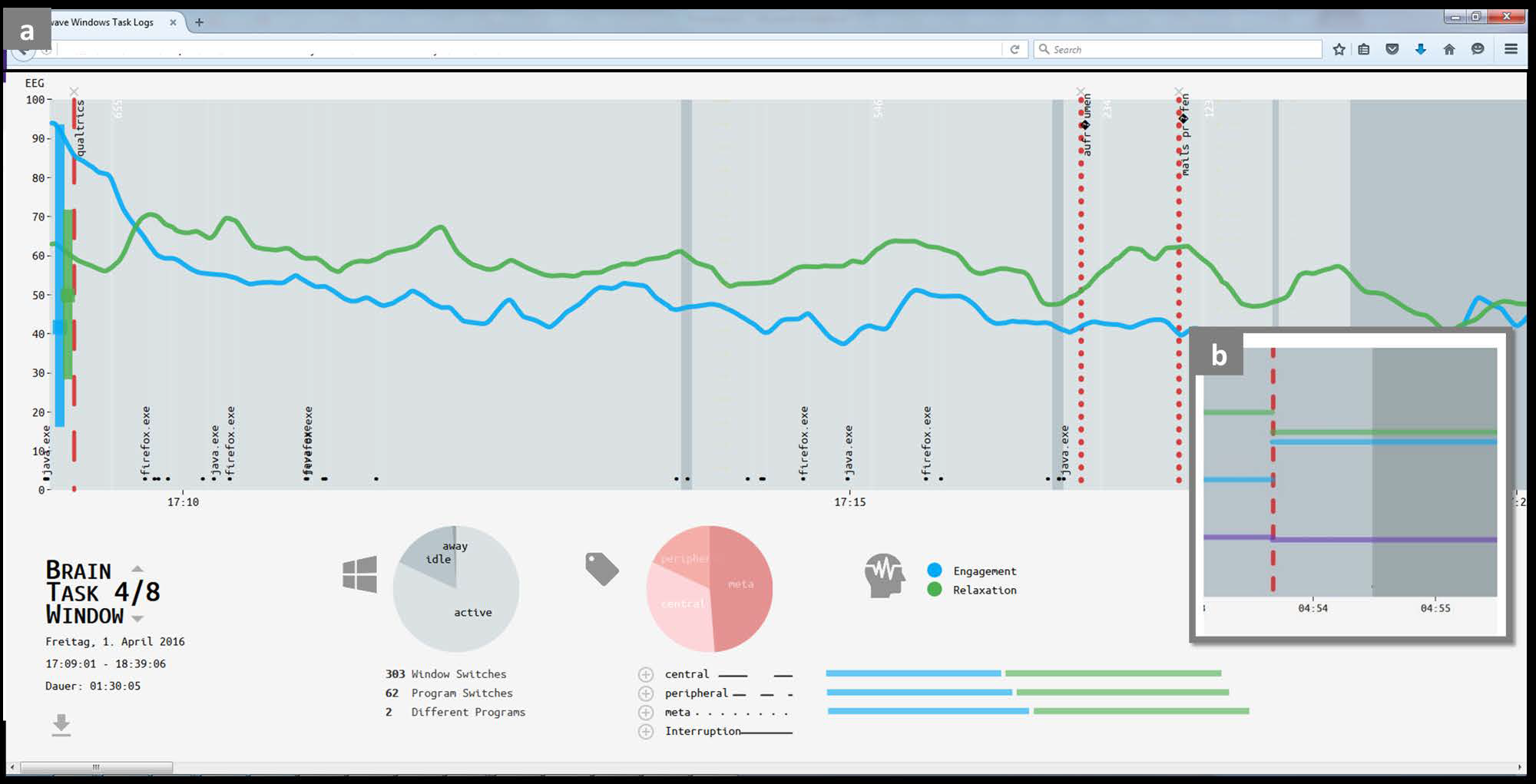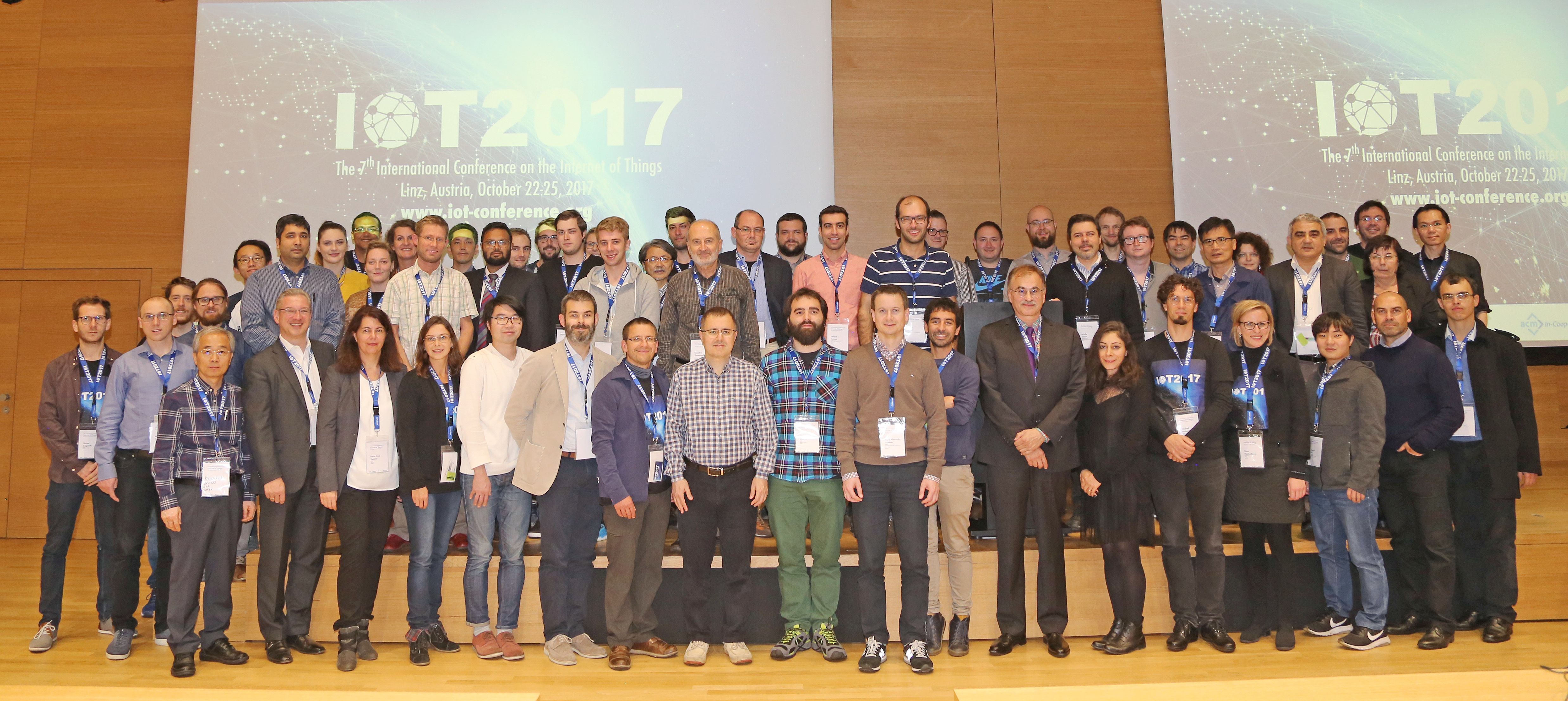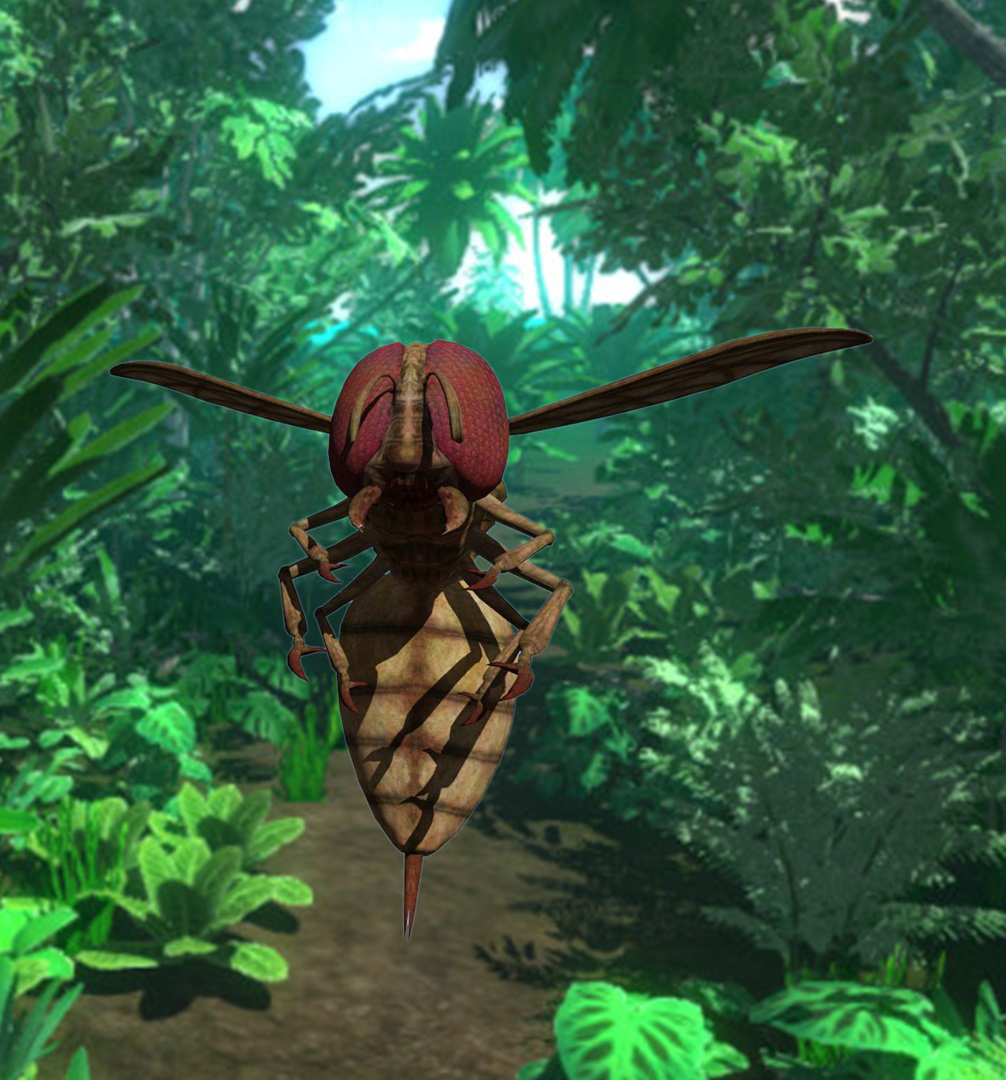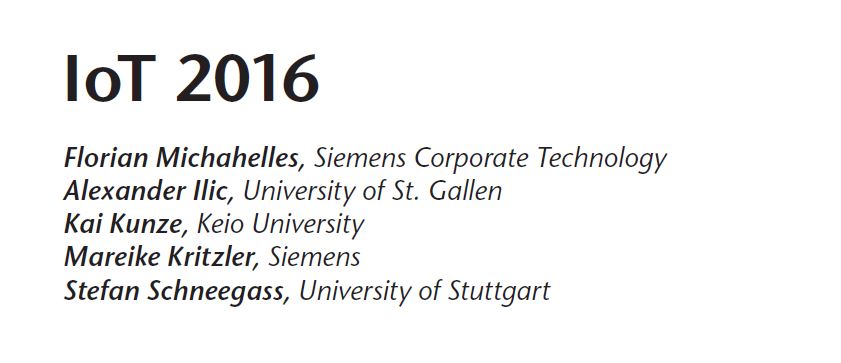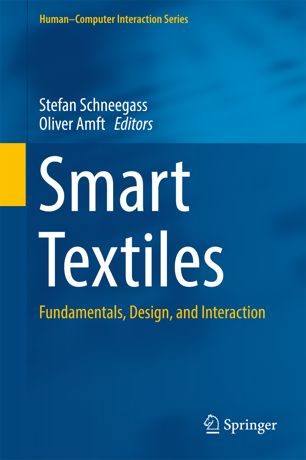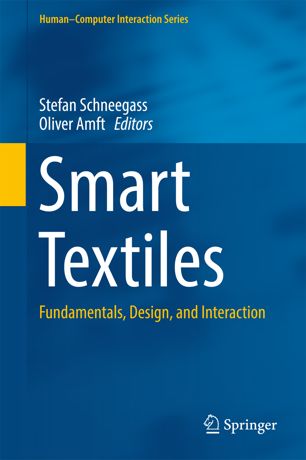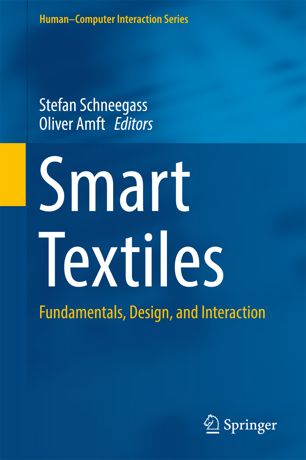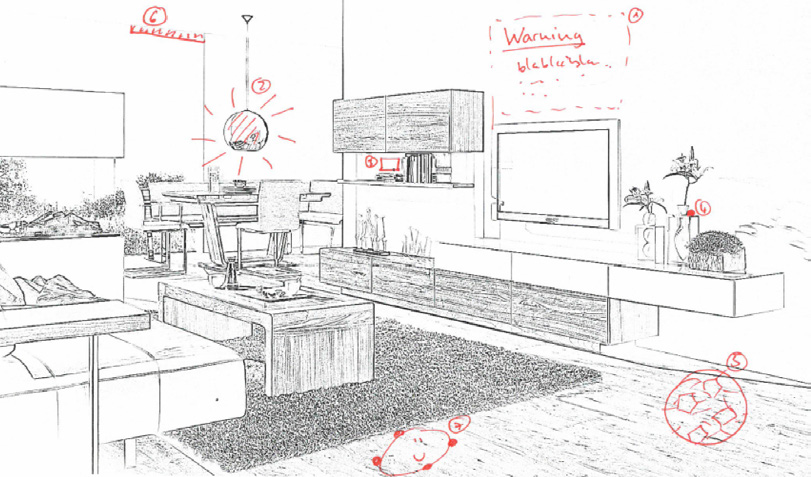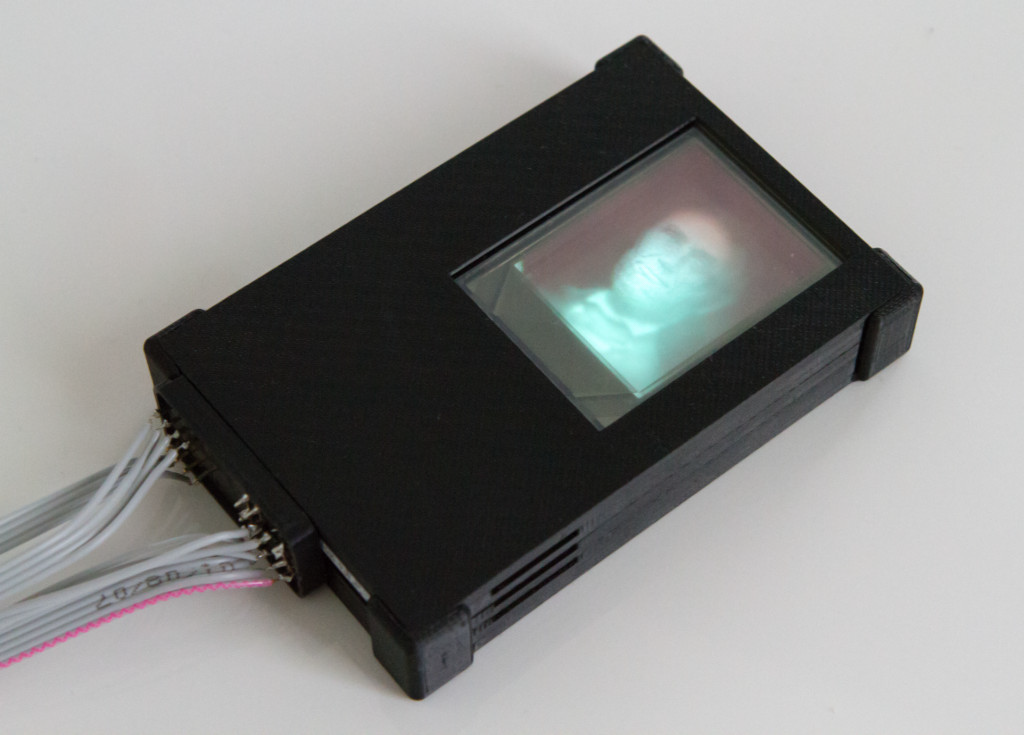Team
Team:

Lehrstuhlinhaber
Prof. Dr. Stefan Schneegass
- Raum:
- S-M 208
- Telefon:
- +49 201 18-34251
- E-Mail:
- stefan.schneegass (at) uni-due.de
- Sprechstunde:
- nach Vereinbarung
- Adresse:
- Universität Duisburg-Essen
Institut für Informatik und Wirtschaftsinformatik (ICB)
paluno - The Ruhr Institute for Software Technology
Mensch-Computer Interaktion
Schützenbahn 70
45127 Essen - Autorenprofil:
- ORCID
- Google Scholar
Zur Person:
Stefan Schneegass ist Professor für Informatik an der Universität Duisburg-Essen. Er erhielt seinen Doktortitel von der Universität Stuttgart in 2016. Seit Beginn seiner Promotion in 2012 arbeitete er an verschiedenen nationalen und internationalen Forschungsprojekten und publizierte in den wichtigsten Konferenzen und Journalen im Bereich der Mensch-Computer Interaktion. Stefan hat einen Bachelor und Masterabschluss von der Universität Duisburg-Essen. Während des Studiums arbeitete er als studentische Hilfskraft am Lehrstuhl für Pervasive Computing und User Interface Engineering und am DFKI Saarbrücken. Momentan forscht er im Bereich der Mensch-Computer Interaktion insbesondere im Bereich der mobilen, tragbaren und ubiquitären Interaktion.
Forschungsgebiete:
Eine Übersicht über meine Forschung können Sie auf meiner Google Scholar und DBLP Seite finden.
Publikationen:
- Keppel, Jonas; Schneegass, Stefan: Buying vs. Building: Can Money Fix Everything When Prototyping in CyclingHCI for Sports?, CHI 2024, Honolulu, Hawai'i 2024. PDFVolltextBIB DownloadKurzfassungDetails
This position paper explores the dichotomy of building versus buying in the domain of Cycling Human-Computer Interaction (CyclingHCI) for sports applications. Our research focuses on indoor cycling to enhance physical activity through sports motivation. Recognizing that the social component is crucial for many users to sustain regular sports engagement, we investigate the integration of social elements within indoor cycling topics. We outline two approaches: First, we utilize Virtual Reality (VR) Exergames using a bike-based controller as input and actuator aiming for immersive experiences and, therefore, buying a commercial smartbike, the Wahoo KickR Bike. Second, we enhance traditional spinning classes with interactive technology to foster social components during courses, building self-made sensors for attachment to mechanical indoor bikes. Finally, we discuss the challenges and benefits of constructing custom sensors versus purchasing commercial bike trainers. Our lessons learned contribute to informed decision-making in CyclingHCI prototyping, balancing innovation with practicality.
- Pascher, Max; Saad, Alia; Liebers, Jonathan; Heger, Roman; Gerken, Jens; Schneegass, Stefan; Gruenefeld, Uwe: Hands-On Robotics: Enabling Communication Through Direct Gesture Control. In: Companion of the 2024 ACM/IEEE International Conference on Human-Robot Interaction (HRI '24 Companion), March 11--14, 2024, Boulder, CO, USA. ACM, Boulder, Colorado, USA 2024. doi:10.1145/3610978.3640635PDFBIB DownloadKurzfassungDetails
Effective Human-Robot Interaction (HRI) is fundamental to seamlessly integrating robotic systems into our daily lives. However, current communication modes require additional technological interfaces, which can be cumbersome and indirect. This paper presents a novel approach, using direct motion-based communication by moving a robot's end effector. Our strategy enables users to communicate with a robot by using four distinct gestures -- two handshakes ('formal' and 'informal') and two letters ('W' and 'S'). As a proof-of-concept, we conducted a user study with 16 participants, capturing subjective experience ratings and objective data for training machine learning classifiers. Our findings show that the four different gestures performed by moving the robot's end effector can be distinguished with close to 100% accuracy. Our research offers implications for the design of future HRI interfaces, suggesting that motion-based interaction can empower human operators to communicate directly with robots, removing the necessity for additional hardware.
- Saad, Alia; Pascher, Max; Kassem, Khaled; Heger, Roman; Liebers, Jonathan; Schneegass, Stefan; Gruenefeld, Uwe: Hand-in-Hand: Investigating Mechanical Tracking for User Identification in Cobot Interaction. In: Proceedings of International Conference on Mobile and Ubiquitous Multimedia (MUM). Vienna, Austria 2023. doi:10.1145/3626705.3627771PDFBIB DownloadKurzfassungDetails
Robots play a vital role in modern automation, with applications in manufacturing and healthcare. Collaborative robots integrate human and robot movements. Therefore, it is essential to ensure that interactions involve qualified, and thus identified, individuals. This study delves into a new approach: identifying individuals through robot arm movements. Different from previous methods, users guide the robot, and the robot senses the movements via joint sensors. We asked 18 participants to perform six gestures, revealing the potential use as unique behavioral traits or biometrics, achieving F1-score up to 0.87, which suggests direct robot interactions as a promising avenue for implicit and explicit user identification.
- Auda, Jonas; Grünefeld, Uwe; Faltaous, Sarah; Mayer, Sven; Schneegass, Stefan: A Scoping Survey on Cross-reality Systems. In: ACM Computing Surveys. 2023. doi:10.1145/3616536BIB DownloadKurzfassungDetails
Immersive technologies such as Virtual Reality (VR) and Augmented Reality (AR) empower users to experience digital realities. Known as distinct technology classes, the lines between them are becoming increasingly blurry with recent technological advancements. New systems enable users to interact across technology classes or transition between them—referred to as cross-reality systems. Nevertheless, these systems are not well understood. Hence, in this article, we conducted a scoping literature review to classify and analyze cross-reality systems proposed in previous work. First, we define these systems by distinguishing three different types. Thereafter, we compile a literature corpus of 306 relevant publications, analyze the proposed systems, and present a comprehensive classification, including research topics, involved environments, and transition types. Based on the gathered literature, we extract nine guiding principles that can inform the development of cross-reality systems. We conclude with research challenges and opportunities.
- Auda, Jonas; Grünefeld, Uwe; Mayer, Sven; Faltaous, Sarah; Schneegass, Stefan: The Actuality-Time Continuum: Visualizing Interactions and Transitions Taking Place in Cross-Reality Systems. In: IEEE ISMAR 2023. Sydney 2023. VolltextBIB DownloadKurzfassungDetails
In the last decade, researchers contributed an increasing number of cross-reality systems and their evaluations. Going beyond individual technologies such as Virtual or Augmented Reality, these systems introduce novel approaches that help to solve relevant problems such as the integration of bystanders or physical objects. However, cross-reality systems are complex by nature, and describing the interactions and transitions taking place is a challenging task. Thus, in this paper, we propose the idea of the Actuality-Time Continuum that aims to enable researchers and designers alike to visualize complex cross-reality experiences. Moreover, we present four visualization examples that illustrate the potential of our proposal and conclude with an outlook on future perspectives.
- Keppel, Jonas; Strauss, Marvin; Faltaous, Sarah; Liebers, Jonathan; Heger, Roman; Gruenefeld, Uwe; Schneegass, Stefan: Don't Forget to Disinfect: Understanding Technology-Supported Hand Disinfection Stations. In: Proc. ACM Hum.-Comput. Interact., Jg. 7 (2023). doi:10.1145/3604251PDFBIB DownloadKurzfassungDetails
The global COVID-19 pandemic created a constant need for hand disinfection. While it is still essential, disinfection use is declining with the decrease in perceived personal risk (e.g., as a result of vaccination). Thus this work explores using different visual cues to act as reminders for hand disinfection. We investigated different public display designs using (1) paper-based only, adding (2) screen-based, or (3) projection-based visual cues. To gain insights into these designs, we conducted semi-structured interviews with passersby (N=30). Our results show that the screen- and projection-based conditions were perceived as more engaging. Furthermore, we conclude that the disinfection process consists of four steps that can be supported: drawing attention to the disinfection station, supporting the (subconscious) understanding of the interaction, motivating hand disinfection, and performing the action itself. We conclude with design implications for technology-supported disinfection.
- Liebers, Carina; Prochazka, Marvin; Pfützenreuter, Niklas; Liebers, Jonathan; Auda, Jonas; Gruenefeld, Uwe; Schneegass, Stefan: Pointing It out! Comparing Manual Segmentation of 3D Point Clouds between Desktop, Tablet, and Virtual Reality. In: International Journal of Human–Computer Interaction (2023), S. 1-15. doi:10.1080/10447318.2023.2238945PDFVolltextBIB DownloadKurzfassungDetails
Scanning everyday objects with depth sensors is the state-of-the-art approach to generating point clouds for realistic 3D representations. However, the resulting point cloud data suffers from outliers and contains irrelevant data from neighboring objects. To obtain only the desired 3D representation, additional manual segmentation steps are required. In this paper, we compare three different technology classes as independent variables (desktop vs. tablet vs. virtual reality) in a within-subject user study (N = 18) to understand their effectiveness and efficiency for such segmentation tasks. We found that desktop and tablet still outperform virtual reality regarding task completion times, while we could not find a significant difference between them in the effectiveness of the segmentation. In the post hoc interviews, participants preferred the desktop due to its familiarity and temporal efficiency and virtual reality due to its given three-dimensional representation.
- Pascher, Max; Grünefeld, Uwe; Schneegass, Stefan; Gerken, Jens: How to Communicate Robot Motion Intent: A Scoping Review. In: Acm (Hrsg.): Proceedings of the 2023 CHI Conference on Human Factors in Computing Systems (CHI ’23). 2023. doi:10.1145/3544548.3580857PDFVolltextBIB DownloadKurzfassungDetails
Robots are becoming increasingly omnipresent in our daily lives, supporting us and carrying out autonomous tasks. In Human-Robot Interaction, human actors benefit from understanding the robot's motion intent to avoid task failures and foster collaboration. Finding effective ways to communicate this intent to users has recently received increased research interest. However, no common language has been established to systematize robot motion intent. This work presents a scoping review aimed at unifying existing knowledge. Based on our analysis, we present an intent communication model that depicts the relationship between robot and human through different intent dimensions (intent type, intent information, intent location). We discuss these different intent dimensions and their interrelationships with different kinds of robots and human roles. Throughout our analysis, we classify the existing research literature along our intent communication model, allowing us to identify key patterns and possible directions for future research.
- Pascher, Max; Franzen, Til; Kronhardt, Kirill; Grünefeld, Uwe; Schneegass, Stefan; Gerken, Jens: HaptiX: Vibrotactile Haptic Feedback for Communication of 3D Directional Cues. In: Acm (Hrsg.): Proceedings of the 2023 CHI Conference on Human Factors in Computing Systems - Extended Abstract (CHI ’23). 2023. doi:10.1145/3544549.3585601PDFVolltextBIB DownloadKurzfassungDetails
In Human-Computer-Interaction, vibrotactile haptic feedback offers the advantage of being independent of any visual perception of the environment. Most importantly, the user's field of view is not obscured by user interface elements, and the visual sense is not unnecessarily strained. This is especially advantageous when the visual channel is already busy, or the visual sense is limited. We developed three design variants based on different vibrotactile illusions to communicate 3D directional cues. In particular, we explored two variants based on the vibrotactile illusion of the cutaneous rabbit and one based on apparent vibrotactile motion. To communicate gradient information, we combined these with pulse-based and intensity-based mapping. A subsequent study showed that the pulse-based variants based on the vibrotactile illusion of the cutaneous rabbit are suitable for communicating both directional and gradient characteristics. The results further show that a representation of 3D directions via vibrations can be effective and beneficial.
- Saad, Alia; Izadi, Kian; Ahmad Khan, Anam; Knierim, Pascal; Schneegass, Stefan; Alt, Florian; Abdelrahman, Yomna: HotFoot: Foot-Based User Identification Using Thermal Imaging. In: Proceedings of the 2023 CHI Conference on Human Factors in Computing Systems. Association for Computing Machinery, New York, NY, USA 2023. doi:10.1145/3544548.3580924BIB DownloadKurzfassungDetails
We propose a novel method for seamlessly identifying users by combining thermal and visible feet features. While it is known that users’ feet have unique characteristics, these have so far been underutilized for biometric identification, as observing those features often requires the removal of shoes and socks. As thermal cameras are becoming ubiquitous, we foresee a new form of identification, using feet features and heat traces to reconstruct the footprint even while wearing shoes or socks. We collected a dataset of users’ feet (N = 21), wearing three types of footwear (personal shoes, standard shoes, and socks) on three floor types (carpet, laminate, and linoleum). By combining visual and thermal features, an AUC between 91.1% and 98.9%, depending on floor type and shoe type can be achieved, with personal shoes on linoleum floor performing best. Our findings demonstrate the potential of thermal imaging for continuous and unobtrusive user identification.
- Keppel, Jonas; Gruenefeld, Uwe; Strauss, Marvin; Gonzalez, Luis Ignacio Lopera; Amft, Oliver; Schneegass, Stefan: Reflecting on Approaches to Monitor User's Dietary Intake, MobileHCI 2022, Vancouver, Canada 2022. PDFVolltextBIB DownloadKurzfassungDetails
Monitoring dietary intake is essential to providing user feedback and achieving a healthier lifestyle. In the past, different approaches for monitoring dietary behavior have been proposed. In this position paper, we first present an overview of the state-of-the-art techniques grouped by image- and sensor-based approaches. After that, we introduce a case study in which we present a Wizard-of-Oz approach as an alternative and non-automatic monitoring method.
- Detjen, Henrik; Faltaous, Sarah; Keppel, Jonas; Prochazka, Marvin; Gruenefeld, Uwe; Sadeghian, Shadan; Schneegass, Stefan: Investigating the Influence of Gaze- and Context-Adaptive Head-up Displays on Take-Over Requests. In: Acm (Hrsg.): AutomotiveUI '22: Proceedings of the 14th International Conference on Automotive User Interfaces and Interactive Vehicular Applications. 2022. doi:10.1145/3543174.3546089VolltextBIB DownloadKurzfassungDetails
In Level 3 automated vehicles, preparing drivers for take-over requests (TORs) on the head-up display (HUD) requires their repeated attention. Visually salient HUD elements can distract attention from potentially critical parts in a driving scene during a TOR. Further, attention is (a) meanwhile needed for non-driving-related activities and can (b) be over-requested. In this paper, we conduct a driving simulator study (N=12), varying required attention by HUD warning presence (absent vs. constant vs. TOR-only) across gaze-adaptivity (with vs. without) to fit warnings to the situation. We found that (1) drivers value visual support during TORs, (2) gaze-adaptive scene complexity reduction works but creates a benefit-neutralizing distraction for some, and (3) drivers perceive constant HUD warnings as annoying and distracting over time. Our findings highlight the need for (a) HUD adaptation based on user activities and potential TORs and (b) sparse use of warning cues in future HUD designs.
- Faltaous, Sarah; Prochazka, Marvin; Auda, Jonas; Keppel, Jonas; Wittig, Nick; Gruenefeld, Uwe; Schneegass, Stefan: Give Weight to VR: Manipulating Users’ Perception of Weight in Virtual Reality with Electric Muscle Stimulation, Association for Computing Machinery, New York, NY, USA 2022. (ISBN 9781450396905) doi:10.1145/3543758.3547571) BIB DownloadKurzfassungDetails
Virtual Reality (VR) devices empower users to experience virtual worlds through rich visual and auditory sensations. However, believable haptic feedback that communicates the physical properties of virtual objects, such as their weight, is still unsolved in VR. The current trend towards hand tracking-based interactions, neglecting the typical controllers, further amplifies this problem. Hence, in this work, we investigate the combination of passive haptics and electric muscle stimulation to manipulate users’ perception of weight, and thus, simulate objects with different weights. In a laboratory user study, we investigate four differing electrode placements, stimulating different muscles, to determine which muscle results in the most potent perception of weight with the highest comfort. We found that actuating the biceps brachii or the triceps brachii muscles increased the weight perception of the users. Our findings lay the foundation for future investigations on weight perception in VR.
- Grünefeld, Uwe; Geilen, Alexander; Liebers, Jonathan; Wittig, Nick; Koelle, Marion; Schneegass, Stefan: ARm Haptics: 3D-Printed Wearable Haptics for Mobile Augmented Reality. In: Proc. ACM Hum.-Comput. Interact., Jg. 6 (2022). doi:10.1145/3546728BIB DownloadKurzfassungDetails
Augmented Reality (AR) technology enables users to superpose virtual content onto their environments. However, interacting with virtual content while mobile often requires users to perform interactions in mid-air, resulting in a lack of haptic feedback. Hence, in this work, we present the ARm Haptics system, which is worn on the user's forearm and provides 3D-printed input modules, each representing well-known interaction components such as buttons, sliders, and rotary knobs. These modules can be changed quickly, thus allowing users to adapt them to their current use case. After an iterative development of our system, which involved a focus group with HCI researchers, we conducted a user study to compare the ARm Haptics system to hand-tracking-based interaction in mid-air (baseline). Our findings show that using our system results in significantly lower error rates for slider and rotary input. Moreover, use of the ARm Haptics system results in significantly higher pragmatic quality and lower effort, frustration, and physical demand. Following our findings, we discuss opportunities for haptics worn on the forearm.
- Grünefeld, Uwe; Auda, Jonas; Mathis, Florian; Schneegass, Stefan; Khamis, Mohamed; Gugenheimer, Jan; Mayer, Sven: VRception: Rapid Prototyping of Cross-Reality Systems in Virtual Reality. In: Proceedings of the 41st ACM Conference on Human Factors in Computing Systems (CHI). Association for Computing Machinery, New Orleans, United States 2022. doi:10.1145/3491102.3501821BIB DownloadKurzfassungDetails
Cross-reality systems empower users to transition along the realityvirtuality continuum or collaborate with others experiencing different manifestations of it. However, prototyping these systems is challenging, as it requires sophisticated technical skills, time, and often expensive hardware. We present VRception, a concept and toolkit for quick and easy prototyping of cross-reality systems. By simulating all levels of the reality-virtuality continuum entirely in Virtual Reality, our concept overcomes the asynchronicity of realities, eliminating technical obstacles. Our VRception Toolkit leverages this concept to allow rapid prototyping of cross-reality systems and easy remixing of elements from all continuum levels. We replicated six cross-reality papers using our toolkit and presented them to their authors. Interviews with them revealed that our toolkit sufficiently replicates their core functionalities and allows quick iterations. Additionally, remote participants used our toolkit in pairs to collaboratively implement prototypes in about eight minutes that they would have otherwise expected to take days.
- Auda, Jonas; Grünefeld, Uwe; Schneegass, Stefan: If The Map Fits! Exploring Minimaps as Distractors from Non-Euclidean Spaces in Virtual Reality. In: CHI 22. ACM, 2022. doi:10.1145/3491101.3519621BIB DownloadDetails
- Auda, Jonas; Grünefeld, Uwe; Kosch, Thomas; Schneegass, Stefan: The Butterfly Effect: Novel Opportunities for Steady-State Visually-Evoked Potential Stimuli in Virtual Reality. In: Researchgate (Hrsg.): Augmented Humans. Kashiwa, Chiba, Japan 2022. doi:DOI:10.1145/3519391.3519397BIB DownloadDetails
- Liebers, Jonathan; Brockel, Sascha; Gruenefeld, Uwe; Schneegass, Stefan: Identifying Users by Their Hand Tracking Data in Augmented and Virtual Reality. In: International Journal of Human–Computer Interaction (2022). doi:10.1080/10447318.2022.2120845PDFBIB DownloadKurzfassungDetails
Nowadays, Augmented and Virtual Reality devices are widely available and are often shared among users due to their high cost. Thus, distinguishing users to offer personalized experiences is essential. However, currently used explicit user authentication(e.g., entering a password) is tedious and vulnerable to attack. Therefore, this work investigates the feasibility of implicitly identifying users by their hand tracking data. In particular, we identify users by their uni- and bimanual finger behavior gathered from their interaction with eight different universal interface elements, such as buttons and sliders. In two sessions, we recorded the tracking data of 16 participants while they interacted with various interface elements in Augmented and Virtual Reality. We found that user identification is possible with up to 95 % accuracy across sessions using an explainable machine learning approach. We conclude our work by discussing differences between interface elements, and feature importance to provide implications for behavioral biometric systems.
- Keppel, Jonas; Liebers, Jonathan; Auda, Jonas; Gruenefeld, Uwe; Schneegass, Stefan: ExplAInable Pixels: Investigating One-Pixel Attacks on Deep Learning Models with Explainable Visualizations. In: Proceedings of the 21st International Conference on Mobile and Ubiquitous Multimedia. Association for Computing Machinery, New York, NY, USA 2022, S. 231-242. doi:10.1145/3568444.3568469BIB DownloadKurzfassungDetails
Nowadays, deep learning models enable numerous safety-critical applications, such as biometric authentication, medical diagnosis support, and self-driving cars. However, previous studies have frequently demonstrated that these models are attackable through slight modifications of their inputs, so-called adversarial attacks. Hence, researchers proposed investigating examples of these attacks with explainable artificial intelligence to understand them better. In this line, we developed an expert tool to explore adversarial attacks and defenses against them. To demonstrate the capabilities of our visualization tool, we worked with the publicly available CIFAR-10 dataset and generated one-pixel attacks. After that, we conducted an online evaluation with 16 experts. We found that our tool is usable and practical, providing evidence that it can support understanding, explaining, and preventing adversarial examples.
- Liebers, Jonathan; Horn, Patrick; Burschik, Christian; Gruenefeld, Uwe; Schneegass, Stefan: Using Gaze Behavior and Head Orientation for Implicit Identification in Virtual Reality. In: Proceedings of the 27th ACM Symposium on Virtual Reality Software and Technology (VRST). Association for Computing Machinery, Osaka, Japan 2021. doi:10.1145/3489849.3489880BIB DownloadKurzfassungDetails
Identifying users of a Virtual Reality (VR) headset provides designers of VR content with the opportunity to adapt the user interface, set user-specific preferences, or adjust the level of difficulty either for games or training applications. While most identification methods currently rely on explicit input, implicit user identification is less disruptive and does not impact the immersion of the users. In this work, we introduce a biometric identification system that employs the user’s gaze behavior as a unique, individual characteristic. In particular, we focus on the user’s gaze behavior and head orientation while following a moving stimulus. We verify our approach in a user study. A hybrid post-hoc analysis results in an identification accuracy of up to 75% for an explainable machine learning algorithm and up to 100% for a deep learning approach. We conclude with discussing application scenarios in which our approach can be used to implicitly identify users.
- Auda, Jonas; Mayer, Sven; Verheyen, Nils; Schneegass, Stefan: Flyables: Haptic Input Devices for Virtual Reality using Quadcopters. In: ResearchGate (Hrsg.): VRST. 2021. doi:10.1145/3489849.3489855BIB DownloadDetails
- Auda, Jonas; Grünefeld, Uwe; Pfeuffer, Ken; Rivu, Radiah; Florian, Alt; Schneegass, Stefan: I'm in Control! Transferring Object Ownership Between Remote Users with Haptic Props in Virtual Reality. In: Proceedings of the 9th ACM Symposium on Spatial User Interaction (SUI). Association for Computing Machinery, 2021. doi:10.1145/3485279.3485287BIB DownloadDetails
- Saad, Alia; Liebers, Jonathan; Gruenefeld, Uwe; Alt, Florian; Schneegass, Stefan: Understanding Bystanders’ Tendency to Shoulder Surf Smartphones Using 360-Degree Videos in Virtual Reality. In: Proceedings of the 23rd International Conference on Mobile Human-Computer Interaction (MobileHCI). Association for Computing Machinery, Toulouse, France 2021. doi:10.1145/3447526.3472058BIB DownloadKurzfassungDetails
Shoulder surfing is an omnipresent risk for smartphone users. However, investigating these attacks in the wild is difficult because of either privacy concerns, lack of consent, or the fact that asking for consent would influence people’s behavior (e.g., they could try to avoid looking at smartphones). Thus, we propose utilizing 360-degree videos in Virtual Reality (VR), recorded in staged real-life situations on public transport. Despite differences between perceiving videos in VR and experiencing real-world situations, we believe this approach to allow novel insights on observers’ tendency to shoulder surf another person’s phone authentication and interaction to be gained. By conducting a study (N=16), we demonstrate that a better understanding of shoulder surfers’ behavior can be obtained by analyzing gaze data during video watching and comparing it to post-hoc interview responses. On average, participants looked at the phone for about 11% of the time it was visible and could remember half of the applications used.
- Auda, Jonas; Grünefeld, Uwe; Schneegass, Stefan: Enabling Reusable Haptic Props for Virtual Reality by Hand Displacement. In: Proceedings of the Conference on Mensch Und Computer (MuC). Association for Computing Machinery, Ingolstadt, Germany 2021, S. 412-417. doi:10.1145/3473856.3474000BIB DownloadKurzfassungDetails
Virtual Reality (VR) enables compelling visual experiences. However, providing haptic feedback is still challenging. Previous work suggests utilizing haptic props to overcome such limitations and presents evidence that props could function as a single haptic proxy for several virtual objects. In this work, we displace users’ hands to account for virtual objects that are smaller or larger. Hence, the used haptic prop can represent several differently-sized virtual objects. We conducted a user study (N = 12) and presented our participants with two tasks during which we continuously handed them the same haptic prop but they saw in VR differently-sized virtual objects. In the first task, we used a linear hand displacement and increased the size of the virtual object to understand when participants perceive a mismatch. In the second task, we compare the linear displacement to logarithmic and exponential displacements. We found that participants, on average, do not perceive the size mismatch for virtual objects up to 50% larger than the physical prop. However, we did not find any differences between the explored different displacement. We conclude our work with future research directions.
- Faltaous, Sarah; Gruenefeld, Uwe; Schneegass, Stefan: Towards a Universal Human-Computer Interaction Model for Multimodal Interactions. In: Proceedings of the Conference on Mensch Und Computer (MuC). Association for Computing Machinery, Ingolstadt, Germany 2021, S. 59-63. doi:10.1145/3473856.3474008BIB DownloadKurzfassungDetails
Models in HCI describe and provide insights into how humans use interactive technology. They are used by engineers, designers, and developers to understand and formalize the interaction process. At the same time, novel interaction paradigms arise constantly introducing new ways of how interactive technology can support humans. In this work, we look into how these paradigms can be described using the classical HCI model introduced by Schomaker in 1995. We extend this model by presenting new relations that would provide a better understanding of them. For this, we revisit the existing interaction paradigms and try to describe their interaction using this model. The goal of this work is to highlight the need to adapt the models to new interaction paradigms and spark discussion in the HCI community on this topic.
- Faltaous, Sarah; Janzon, Simon; Heger, Roman; Strauss, Marvin; Golkar, Pedram; Viefhaus, Matteo; Prochazka, Marvin; Gruenefeld, Uwe; Schneegass, Stefan: Wisdom of the IoT Crowd: Envisioning a Smart Home-Based Nutritional Intake Monitoring System. In: Proceedings of the Conference on Mensch Und Computer (MuC). Association for Computing Machinery, Ingolstadt, Germany 2021, S. 568-573. doi:10.1145/3473856.3474009BIB DownloadKurzfassungDetails
Obesity and overweight are two factors linked to various health problems that lead to death in the long run. Technological advancements have granted the chance to create smart interventions. These interventions could be operated by the Internet of Things (IoT) that connects different smart home and wearable devices, providing a large pool of data. In this work, we use IoT with different technologies to present an exemplary nutrition monitoring intake system. This system integrates the input from various devices to understand the users’ behavior better and provide recommendations accordingly. Furthermore, we report on a preliminary evaluation through semi-structured interviews with six participants. Their feedback highlights the system’s opportunities and challenges.
- Auda, Jonas; Weigel, Martin; Cauchard, Jessica; Schneegass, Stefan: Understanding Drone Landing on the Human Body. In: ResearchGate (Hrsg.): 23rd International Conference on Mobile Human-Computer Interaction. 2021. doi:10.1145/3447526.3472031BIB DownloadDetails
- Auda, Jonas; Heger, Roman; Gruenefeld, Uwe; Schneegaß, Stefan: VRSketch: Investigating 2D Sketching in Virtual Reality with Different Levels of Hand and Pen Transparency. In: 18th International Conference on Human–Computer Interaction (INTERACT). Springer, Bari, Italy 2021, S. 195-211. doi:10.1007/978-3-030-85607-6_14BIB DownloadKurzfassungDetails
Sketching is a vital step in design processes. While analog sketching on pen and paper is the defacto standard, Virtual Reality (VR) seems promising for improving the sketching experience. It provides myriads of new opportunities to express creative ideas. In contrast to reality, possible drawbacks of pen and paper drawing can be tackled by altering the virtual environment. In this work, we investigate how hand and pen transparency impacts users’ 2D sketching abilities. We conducted a lab study (N=20N=20) investigating different combinations of hand and pen transparency. Our results show that a more transparent pen helps one sketch more quickly, while a transparent hand slows down. Further, we found that transparency improves sketching accuracy while drawing in the direction that is occupied by the user’s hand.
- Arboleda, S. A.; Pascher, Max; Lakhnati, Y.; Gerken, Jens: Understanding Human-Robot Collaboration for People with Mobility Impairments at the Workplace, a Thematic Analysis. In: 29th IEEE International Conference on Robot and Human Interactive Communication. ACM, 2021. doi:10.1109/RO-MAN47096.2020.9223489.BIB DownloadKurzfassungDetails
Assistive technologies such as human-robot collaboration, have the potential to ease the life of people with physical mobility impairments in social and economic activities. Currently, this group of people has lower rates of economic participation, due to the lack of adequate environments adapted to their capabilities. We take a closer look at the needs and preferences of people with physical mobility impairments in a human-robot cooperative environment at the workplace. Specifically, we aim to design how to control a robotic arm in manufacturing tasks for people with physical mobility impairments. We present a case study of a sheltered-workshop as a prototype for an institution that employs people with disabilities in manufacturing jobs. Here, we collected data of potential end-users with physical mobility impairments, social workers, and supervisors using a participatory design technique (Future-Workshop). These stakeholders were divided into two groups, primary (end-users) and secondary users (social workers, supervisors), which were run across two separate sessions. The gathered information was analyzed using thematic analysis to reveal underlying themes across stakeholders. We identified concepts that highlight underlying concerns related to the robot fitting in the social and organizational structure, human-robot synergy, and human-robot problem management. In this paper, we present our findings and discuss the implications of each theme when shaping an inclusive human-robot cooperative workstation for people with physical mobility impairments.
- Liebers, Jonathan; Abdelaziz, Mark; Mecke, Lukas; Saad, Alia; Auda, Jonas; Alt, Florian; Schneegaß, Stefan: Understanding User Identification in Virtual Reality Through Behavioral Biometrics and the Effect of Body Normalization. In: Proceedings of the 40th ACM Conference on Human Factors in Computing Systems (CHI). Association for Computing Machinery, Yokohama, Japan 2021. doi:10.1145/3411764.3445528BIB DownloadKurzfassungDetails
Virtual Reality (VR) is becoming increasingly popular both in the entertainment and professional domains. Behavioral biometrics have recently been investigated as a means to continuously and implicitly identify users in VR. Applications in VR can specifically benefit from this, for example, to adapt virtual environments and user interfaces as well as to authenticate users. In this work, we conduct a lab study (N = 16) to explore how accurately users can be identified during two task-driven scenarios based on their spatial movement. We show that an identification accuracy of up to 90% is possible across sessions recorded on different days. Moreover, we investigate the role of users’ physiology in behavioral biometrics by virtually altering and normalizing their body proportions. We find that body normalization in general increases the identification rate, in some cases by up to 38%; hence, it improves the performance of identification systems.
- Borsum, Florian; Pascher, Max; Auda, Jonas; Schneegass, Stefan; Lux, Gregor; Gerken, Jens: Stay on Course in VR: Comparing the Precision of Movement between Gamepad, Armswinger, and Treadmill: Kurs Halten in VR: Vergleich Der Bewegungspräzision von Gamepad, Armswinger Und Laufstall. In: Mensch Und Computer 2021. Association for Computing Machinery, New York, NY, USA 2021, S. 354-365. doi:10.1145/3473856.3473880BIB DownloadKurzfassungDetails
In diesem Beitrag wird untersucht, inwieweit verschiedene Formen von Fortbewegungstechniken in Virtual Reality Umgebungen Einfluss auf die Präzision bei der Interaktion haben. Dabei wurden insgesamt drei Techniken untersucht: Zwei der Techniken integrieren dabei eine körperliche Aktivität, um einen hohen Grad an Realismus in der Bewegung zu erzeugen (Armswinger, Laufstall). Als dritte Technik wurde ein Gamepad als Baseline herangezogen. In einer Studie mit 18 Proband:innen wurde die Präzision dieser drei Fortbewegungstechniken über sechs unterschiedliche Hindernisse in einem VR-Parcours untersucht. Die Ergebnisse zeigen, dass für einzelne Hindernisse, die zum einen eine Kombination aus Vorwärts- und Seitwärtsbewegung erfordern (Slalom, Klippe) sowie auf Geschwindigkeit abzielen (Schiene), der Laufstall eine signifikant präzisere Steuerung ermöglicht als der Armswinger. Auf den gesamten Parcours gesehen ist jedoch kein Eingabegerät signifikant präziser als ein anderes. Die Benutzung des Laufstalls benötigt zudem signifikant mehr Zeit als Gamepad und Armswinger. Ebenso zeigte sich, dass das Ziel, eine reale Laufbewegung 1:1 abzubilden, auch mit einem Laufstall nach wie vor nicht erreicht wird, die Bewegung aber dennoch als intuitiv und immersiv wahrgenommen wird.
- Pascher, Max; Baumeister, Annalies; Schneegass, Stefan; Klein, Barbara; Gerken, Jens: Recommendations for the Development of a Robotic Drinking and Eating Aid - An Ethnographic Study. In: Ardito, Carmelo; Lanzilotti, Rosa; Malizia, Alessio; Petrie, Helen; Piccinno, Antonio; Desolda, Giuseppe; Inkpen, Kori (Hrsg.): Human-Computer Interaction -- INTERACT 2021. Springer International Publishing, Cham 2021, S. 331-351. BIB DownloadKurzfassungDetails
Being able to live independently and self-determined in one's own home is a crucial factor or human dignity and preservation of self-worth. For people with severe physical impairments who cannot use their limbs for every day tasks, living in their own home is only possible with assistance from others. The inability to move arms and hands makes it hard to take care of oneself, e.g. drinking and eating independently. In this paper, we investigate how 15 participants with disabilities consume food and drinks. We report on interviews, participatory observations, and analyzed the aids they currently use. Based on our findings, we derive a set of recommendations that supports researchers and practitioners in designing future robotic drinking and eating aids for people with disabilities.
- Arevalo Arboleda, Stephanie; Pascher, Max; Baumeister, Annalies; Klein, Barbara; Gerken, Jens: Reflecting upon Participatory Design in Human-Robot Collaboration for People with Motor Disabilities: Challenges and Lessons Learned from Three Multiyear Projects. In: The 14th PErvasive Technologies Related to Assistive Environments Conference. Association for Computing Machinery, New York, NY, USA 2021, S. 147-155. doi:10.1145/3453892.3458044BIB DownloadKurzfassungDetails
Human-robot technology has the potential to positively impact the lives of people with motor disabilities. However, current efforts have mostly been oriented towards technology (sensors, devices, modalities, interaction techniques), thus relegating the user and their valuable input to the wayside. In this paper, we aim to present a holistic perspective of the role of participatory design in Human-Robot Collaboration (HRC) for People with Motor Disabilities (PWMD). We have been involved in several multiyear projects related to HRC for PWMD, where we encountered different challenges related to planning and participation, preferences of stakeholders, using certain participatory design techniques, technology exposure, as well as ethical, legal, and social implications. These challenges helped us provide five lessons learned that could serve as a guideline to researchers when using participatory design with vulnerable groups. In particular, early-career researchers who are starting to explore HRC research for people with disabilities.
- Borsum, Florian; Pascher, Max; Auda, Jonas; Schneegass, Stefan; Lux, Gregor; Gerken, Jens: Stay on Course in VR: Comparing the Precision of Movement between Gamepad, Armswinger, and Treadmill: Kurs Halten in VR: Vergleich Der Bewegungspräzision von Gamepad, Armswinger Und Laufstall, Association for Computing Machinery, New York, NY, USA 2021. (ISBN 9781450386456) doi:10.1145/3473856.3473880) BIB DownloadKurzfassungDetails
In diesem Beitrag wird untersucht, inwieweit verschiedene Formen von Fortbewegungstechniken in Virtual Reality Umgebungen Einfluss auf die Präzision bei der Interaktion haben. Dabei wurden insgesamt drei Techniken untersucht: Zwei der Techniken integrieren dabei eine körperliche Aktivität, um einen hohen Grad an Realismus in der Bewegung zu erzeugen (Armswinger, Laufstall). Als dritte Technik wurde ein Gamepad als Baseline herangezogen. In einer Studie mit 18 Proband:innen wurde die Präzision dieser drei Fortbewegungstechniken über sechs unterschiedliche Hindernisse in einem VR-Parcours untersucht. Die Ergebnisse zeigen, dass für einzelne Hindernisse, die zum einen eine Kombination aus Vorwärts- und Seitwärtsbewegung erfordern (Slalom, Klippe) sowie auf Geschwindigkeit abzielen (Schiene), der Laufstall eine signifikant präzisere Steuerung ermöglicht als der Armswinger. Auf den gesamten Parcours gesehen ist jedoch kein Eingabegerät signifikant präziser als ein anderes. Die Benutzung des Laufstalls beötigt zudem signifikant mehr Zeit als Gamepad und Armswinger. Ebenso zeigte sich, dass das Ziel, eine reale Laufbewegung 1:1 abzubilden, auch mit einem Laufstall nach wie vor nicht erreicht wird, die Bewegung aber dennoch als intuitiv und immersiv wahrgenommen wird.
- Faltaous, Sarah; Neuwirth, Joshua; Gruenefeld, Uwe; Schneegass, Stefan: SaVR: Increasing Safety in Virtual Reality Environments via Electrical Muscle Stimulation. In: 19th International Conference on Mobile and Ubiquitous Multimedia (MUM). Association for Computing Machinery, Essen, Germany 2020, S. 254-258. doi:10.1145/3428361.3428389BIB DownloadKurzfassungDetails
One of the main benefits of interactive Virtual Reality (VR) applications is that they provide a high sense of immersion. As a result, users lose their sense of real-world space which makes them vulnerable to collisions with real-world objects. In this work, we propose a novel approach to prevent such collisions using Electrical Muscle Stimulation (EMS). EMS actively prevents the movement that would result in a collision by actuating the antagonist muscle. We report on a user study comparing our approach to the commonly used feedback modalities: audio, visual, and vibro-tactile. Our results show that EMS is a promising modality for restraining user movement and, at the same time, rated best in terms of user experience.
- Detjen, Henrik; Pfleging, Bastian; Schneegass, Stefan: A Wizard of Oz Field Study to Understand Non-Driving-Related Activities, Trust, and Acceptance of Automated Vehicles. In: AutomotiveUI 2020. ACM, 2020. doi:10.1145/3409120.3410662BIB DownloadDetails
- Detjen, Henrik; Geisler, Stefan; Schneegass, Stefan: "Help, Accident Ahead!": Using Mixed Reality Environments in Automated Vehicles to Support Occupants After Passive Accident Experiences. In: Acm (Hrsg.): AutomotiveUI (adjunct) 2020. 2020. doi:10.1145/3409251.3411723BIB DownloadDetails
- Schneegaß, Stefan; Auda, Jonas; Heger, Roman; Grünefeld, Uwe; Kosch, Thomas: EasyEG: A 3D-printable Brain-Computer Interface. In: Proceedings of the 33rd ACM Symposium on User Interface Software and Technology (UIST). Minnesota, USA 2020. doi:https://doi.org/10.1145/3379350.3416189BIB DownloadKurzfassungDetails
Brain-Computer Interfaces (BCIs) are progressively adopted by the consumer market, making them available for a variety of use-cases. However, off-the-shelf BCIs are limited in their adjustments towards individual head shapes, evaluation of scalp-electrode contact, and extension through additional sensors. This work presents EasyEG, a BCI headset that is adaptable to individual head shapes and offers adjustable electrode-scalp contact to improve measuring quality. EasyEG consists of 3D-printed and low-cost components that can be extended by additional sensing hardware, hence expanding the application domain of current BCIs. We conclude with use-cases that demonstrate the potentials of our EasyEG headset.
- Poguntke, Romina; Schneegass, Christina; van der Vekens, Lucas; Rzayev, Rufat; Auda, Jonas; Schneegass, Stefan; Schmidt:, Albrecht: NotiModes: an investigation of notification delay modes and their effects on smartphone usersy. In: MuC '20: Proceedings of the Conference on Mensch und Computer. ACM, 2020. doi:https://doi.org/10.1145/3404983.3410006BIB DownloadDetails
- Agarwal, Shivam; Auda, Jonas; Schneegaß, Stefan; Beck:, Fabian: A Design and Application Space for Visualizing User Sessions of Virtual and Mixed Reality Environments. In: VMV2020. ACM, 2020. doi:10.2312/vmv.20201194BIB DownloadDetails
- Saad, Alia; Elkafrawy, Dina Hisham; Abdennadher, Slim; Schneegass, Stefan: Are They Actually Looking? Identifying Smartphones Shoulder Surfing Through Gaze Estimation. In: ETRA. ACM, Stuttgart, Germany 2020. doi:10.1145/3379157.3391422BIB DownloadDetails
- Jonathan Liebers, Stefan Schneegass: Gaze-based Authentication in Virtual Reality. In: ETRA. ACM, 2020. doi:10.1145/3379157.3391421BIB DownloadDetails
- Poguntke, Romina; Schneegass, Christina; van der Vekens, Lucas; Rzayev, Rufat; Auda, Jonas; Schneegass, Stefan; Schmidt, Albrecht: NotiModes: an investigation of notification delay modes and their effects on smartphone users. In: MuC '20: Proceedings of the Conference on Mensch und Computer. ACM, Magdebug, Germany 2020. doi:10.1145/3404983.3410006BIB DownloadDetails
- Safwat, Sherine Ashraf; Bolock, Alia El; Alaa, Mostafa; Faltaous, Sarah; Schneegass, Stefan; Abdennadher, Slim: The Effect of Student-Lecturer Cultural Differences on Engagement in Learning Environments - A Pilot Study. In: Communications in Computer and Information Science. Springer, 2020. doi:10.1007/978-3-030-51999-5\_10BIB DownloadDetails
- Schneegass, Stefan; Sasse, Angela; Alt, Florian; Vogel, Daniel: Authentication Beyond Desktops and Smartphones: Novel Approaches for Smart Devices and Environments. In: CHI'20 Proceedings. ACM, Honolulu, HI, USA 2020. doi:10.1145/3334480.3375144BIB DownloadDetails
- Ranasinghe, Champika; Holländer, Kai; Currano, Rebecca; Sirkin, David; Moore, Dylan; Schneegass, Stefan; Ju, Wendy: Autonomous Vehicle-Pedestrian Interaction Across Cultures: Towards Designing Better External Human Machine Interfaces (eHMIs). In: CHI'20 Proceedings. ACM, Honolulu, HI, USA 2020. doi:10.1145/3334480.3382957BIB DownloadDetails
- Jonathan Liebers, Stefan Schneegass: Introducing Functional Biometrics: Using Body-Reflections as a Novel Class of Biometric Authentication Systems. In: CHI Extended Abstracts 2020. ACM, Honolulu, HI, USA 2020. doi:10.1145/3334480.3383059BIB DownloadDetails
- Faltaous, Sarah; Eljaki, Salma; Schneegass, Stefan: User Preferences of Voice Controlled Smart Light Systems. In: MuC'19: Proceedings of Mensch und Computer 2019. ACM, New York, USA 2019. doi:https://doi.org/10.1145/3340764.3344437PDFBIB DownloadDetails
- Detjen, Henrik; Faltaous, Sarah; Geisler, Stefan; Schneegass, Stefan: User-Defined Voice and Mid-Air Gesture Commands - for Maneuver-based Interventions in Automated Vehicles. In: MuC'19: Proceedings of Mensch und Computer 2019. ACM, New York, USA 2019. doi: DOI: https://doi.org/10.1145/3340764.3340798 PDFBIB DownloadDetails
- Poguntke, Romina; Mantz, Tamara; Hassib, Mariam; Schmidt, Albrecht; Schneegass, Stefan: Smile to Me - Investigating Emotions and their Representation in Text-based Messaging in the Wild. In: MuC'19: Proceedings of Mensch und Computer 2019. ACM, New York, USA 2019. doi:https://doi.org/10.1145/3340764.3340795PDFBIB DownloadDetails
- Pascher, Max; Schneegass, Stefan; Gerken:, Jens: SwipeBuddy A Teleoperated Tablet and Ebook-Reader Holder for a Hands-Free Interaction. In: Human-Computer Interaction – INTERACT 2019. Springer, Paphos, Cyprus 2019. doi:10.1007/978-3-030-29390-1_39BIB DownloadDetails
- Pfeiffer, Max; Medrano, Samuel Navas; Auda, Jonas; Schneegass, Stefan: STOP! Enhancing Drone Gesture Interaction with Force Feedback. In: CHI'19 Proceedings. HAL, Glasgow, UK 2019. doi:https://hal.archives-ouvertes.fr/hal-02128395/documentPDFVolltextBIB DownloadDetails
- Jonas Auda, Max Pascher; Schneegass, Stefan: Around the (Virtual) World - Infinite Walking in Virtual Reality Using Electrical Muscle Stimulation. In: Acm (Hrsg.): CHI'19 Proceedings. Glasgow 2019. doi:https://doi.org/10.1145/3290605.3300661PDFBIB DownloadKurzfassungDetails
Virtual worlds are infinite environments in which the user can move around freely. When shifting from controller-based movement to regular walking as an input, the limitation of the real world also limits the virtual world. Tackling this challenge, we propose the use of electrical muscle stimulation to limit the necessary real-world space to create an unlimited walking experience. We thereby actuate the users‘ legs in a way that they deviate from their straight route and thus, walk in circles in the real world while still walking straight in the virtual world. We report on a study comparing this approach to vision shift – the state-of-the-art approach – as well as combining both approaches. The results show that particularly combining both approaches yield high potential to create an infinite walking experience.
- Faltaous, Sarah; Haas, Gabriel; Barrios, Liliana; Seiderer, Andreas; Rauh, Sebastian Felix; Chae, Han Joo; Schneegass, Stefan; Alt, Florian: BrainShare: A Glimpse of Social Interaction for Locked-in Syndrome Patients. In: CHI EA '19: Extended Abstracts of the 2019 CHI Conference on Human Factors in Computing Systems. ACM, New York, NY, USA 2019. PDFBIB DownloadDetails
- Schneegass, Stefan; Poguntke, Romina; Machulla, Tonja Katrin: Understanding the Impact of Information Representation on Willingness to Share Information. In: CHI '19: Proceedings of the 2019 CHI Conference on Human Factors in Computing Systems. ACM, New YorkNYUnited States 2019. doi:https://doi.org/10.1145/3290605.3300753PDFBIB DownloadDetails
- Sarah Faltaous, Jonathan Liebers; Yomna Abdelrahman, Florian Alt; Schneegass, Stefan: VPID: Towards Vein Pattern Identification Using Thermal Imaging. In: i-com (2019) Nr. 18 (3), S. 259-270. doi:10.1515/icom-2019-0009PDFBIB DownloadKurzfassungDetails
Biometric authentication received considerable attention lately. The vein pattern on the back of the hand is a unique biometric that can be measured through thermal imaging. Detecting this pattern provides an implicit approach that can authenticate users while interacting. In this paper, we present the Vein-Identification system, called VPID. It consists of a vein pattern recognition pipeline and an authentication part. We implemented six different vein-based authentication approaches by combining thermal imaging and computer vision algorithms. Through a study, we show that the approaches achieve a low false-acceptance rate (“FAR”) and a low false-rejection rate (“FRR”). Our findings show that the best approach is the Hausdorff distance-difference applied in combination with a Convolutional Neural Networks (CNN) classification of stacked images.
- Pascher, Max; Schneegass, Stefan; Gerken, Jens: SwipeBuddy. In: Lamas, David; Loizides, Fernando; Nacke, Lennart; Petrie, Helen; Winckler, Marco; Zaphiris, Panayiotis (Hrsg.): Human-Computer Interaction -- INTERACT 2019. Springer International Publishing, Cham 2019, S. 568-571. BIB DownloadKurzfassungDetails
Mobile devices are the core computing platform we use in our everyday life to communicate with friends, watch movies, or read books. For people with severe physical disabilities, such as tetraplegics, who cannot use their hands to operate such devices, these devices are barely usable. Tackling this challenge, we propose SwipeBuddy, a teleoperated robot allowing for touch interaction with a smartphone, tablet, or ebook-reader. The mobile device is mounted on top of the robot and can be teleoperated by a user through head motions and gestures controlling a stylus simulating touch input. Further, the user can control the position and orientation of the mobile device. We demonstrate the SwipeBuddy robot device and its different interaction capabilities.
- Antoun, Sara; Auda, Jonas; Schneegass, Stefan: SlidAR - Towards using AR in Education. In: MUM 2018: Proceedings of the 17th International Conference on Mobile and Ubiquitous Multimedia. ACM, Cairo, Egypt 2018. doi:https://doi.org/10.1145/3282894.3289744PDFBIB DownloadDetails
- Hoppe, Matthias; Knierim, Pascal; Kosch, Thomas; Funk, Markus; Futami, Lauren; Schneegass, Stefan; Henze, Niels; Schmidt, Albrecht; Machulla, Tonja: VRHapticDrones - Providing Haptics in Virtual Reality through Quadcopters. In: MUM 2018: Proceedings of the 17th International Conference on Mobile and Ubiquitous Multimedia. ACM, Cairo, Egypt 2018. doi:https://doi.org/10.1145/3282894.3282898PDFBIB DownloadDetails
- Saad, Alia; Chukwu, Michael; Schneegass, Stefan: Communicating Shoulder Surfing Attacks to Users. In: MUM 2018: Proceedings of the 17th International Conference on Mobile and Ubiquitous Multimedia. ACM, Cairo, Egypt 2018. doi:https://doi.org/10.1145/3282894.3282919PDFBIB DownloadDetails
- Schneegass, Christina; Terzimehić, Nađa; Nettah, Mariam; Schneegass, Stefan: Informing the Design of User - adaptive Mobile Language Learning Applications. In: MUM 2018: Proceedings of the 17th International Conference on Mobile and Ubiquitous Multimedia. ACM, Cairo, Egypt 2018. doi:https://doi.org/10.1145/3282894.3282926PDFBIB DownloadDetails
- Faltaous, Sarah; Elbolock, Alia; Talaat, Mostafa; Abdennadher, Slim; Schneegass, Stefan: Virtual Reality for Cultural Competences. In: MUM 2018: Proceedings of the 17th International Conference on Mobile and Ubiquitous Multimedia. ACM, Cairo, Egypt 2018. doi:https://doi.org/10.1145/3282894.3289739PDFBIB DownloadDetails
- Elagroudy, Passant; Abdelrahman, Yomna; Faltaous, Sarah; Schneegass, Stefan; Davis, Hilary: Workshop on Amplified and Memorable Food Interactions. In: MUM 2018: Proceedings of the 17th International Conference on Mobile and Ubiquitous Multimedia. ACM, Cairo, Egypt 2018. doi:https://doi.org/10.1145/3282894.3286059PDFBIB DownloadDetails
- Auda, Jonas; Hoppe, Matthias; Amiraslanov, Orkhan; Zhou, Bo; Knierim, Pascal; Schneegass, Stefan; Schmidt, Albrecht; Lukowicz, Paul: LYRA - smart wearable in-flight service assistant. In: ISWC '18: Proceedings of the 2018 ACM International Symposium on Wearable Computers. ACM, Singapore, Singapore 2018. doi:https://doi.org/10.1145/3267242.3267282PDFBIB DownloadDetails
- Faltaous, Sarah; Baumann, M.; Schneegass, Stefan; Chuang, Lewis: Design Guidelines for Reliability Communication in Autonomous Vehicles. In: AutomotiveUI '18: Proceedings of the 10th International Conference on Automotive User Interfaces and Interactive Vehicular Applications. ACM, Toronto, Canada 2018. doi:https://doi.org/10.1145/3239060.3239072PDFBIB DownloadDetails
- Poguntke, Romina; Tasci, Cagri; Korhonen, Olli; Alt, Florian; Schneegass, Stefan: AVotar - exploring personalized avatars for mobile interaction with public displays. In: MobileHCI '18: Proceedings of the 20th International Conference on Human-Computer Interaction with Mobile Devices and Services Adjunct. ACM, Barcelona, Spain 2018. doi:https://doi.org/10.1145/3236112.3236113PDFBIB DownloadDetails
- Weber, Dominik; Voit, Alexandra; Auda, Jonas; Schneegass, Stefan; Henze, Niels: Snooze! - investigating the user-defined deferral of mobile notifications. In: MobileHCI '18: Proceedings of the 20th International Conference on Human-Computer Interaction with Mobile Devices and Services. ACM, Barcelona, Spain 2018. doi:https://doi.org/10.1145/3229434.3229436PDFBIB DownloadDetails
- Poguntke, Romina; Kiss, Francisco; Kaplan, Ayhan; Schmidt, Albrecht; Schneegass, Stefan: RainSense - exploring the concept of a sense for weather awareness. In: MobileHCI '18: Proceedings of the 20th International Conference on Human-Computer Interaction with Mobile Devices and Services Adjunct. ACM, Barcelona, Spain 2018. doi:https://doi.org/10.1145/3236112.3236114PDFBIB DownloadDetails
- Voit, Alexandra; Salm, Marie Olivia; Beljaars, Miriam; Kohn, Stefan; Schneegass, Stefan: Demo of a smart plant system as an exemplary smart home application supporting non-urgent notifications. In: NordiCHI '18: Proceedings of the 10th Nordic Conference on Human-Computer Interaction. ACM, Oslo, Norway 2018. doi:https://doi.org/10.1145/3240167.3240231PDFBIB DownloadDetails
- Auda, Jonas; Schneegass, Stefan; Faltaous, Sarah: Control, Intervention, or Autonomy? Understanding the Future of SmartHome Interaction. In: Conference on Human Factors in Computing Systems (CHI). ACM, Montreal, Canada 2018. PDFBIB DownloadDetails
- Hassib, Mariam; Schneegass, Stefan; Henze, Niels; Schmidt, Albrecht; Alt, Florian: A Design Space for Audience Sensing and Feedback Systems. In: CHI EA '18: Extended Abstracts of the 2018 CHI Conference on Human Factors in Computing Systems. ACM, Montreal, Canada 2018. doi:https://doi.org/10.1145/3170427.3188569PDFBIB DownloadDetails
- Kiss, Francisco; Boldt, Robin; Pfleging, Bastian; Schneegass, Stefan: Navigation Systems for Motorcyclists: Exploring Wearable Tactile Feedback for Route Guidance in the Real World. In: CHI '18: Proceedings of the 2018 CHI Conference on Human Factors in Computing Systems. ACM, Montreal, Canada 2018. doi:https://doi.org/10.1145/3173574.3174191PDFBIB DownloadDetails
- Voit, Alexandra; Pfähler, Ferdinand; Schneegass, Stefan: Posture Sleeve: Using Smart Textiles for Public Display Interactions. In: CHI EA '18: Extended Abstracts of the 2018 CHI Conference on Human Factors in Computing Systems. ACM, Montreal 2018. doi:https://doi.org/10.1145/3170427.3188687PDFBIB DownloadDetails
- Auda, Jonas; Weber, Dominik; Voit, Alexandra; Schneegass, Stefan: Understanding User Preferences towards Rule-based Notification Deferral. In: CHI EA '18: Extended Abstracts of the 2018 CHI Conference on Human Factors in Computing Systems. ACM, Montreal, Canada 2018. doi:https://doi.org/10.1145/3170427.3188688PDFBIB DownloadDetails
- Henze, Niels: Design and evaluation of a computer-actuated mouse. In: MUM '17: Proceedings of the 16th International Conference on Mobile and Ubiquitous Multimedia. ACM, Stuttgart. Germany 2017. doi:https://doi.org/10.1145/3152832.3152862PDFBIB DownloadDetails
- Alexandra Voit, Stefan Schneegass: FabricID - using smart textiles to access wearable devices. In: MUM '17: Proceedings of the 16th International Conference on Mobile and Ubiquitous Multimedia. ACM, Stuttgart, Germany 2017. doi:https://doi.org/10.1145/3152832.3156622PDFBIB DownloadDetails
- Hassib, Mariam; Khamis, Mohamed; Friedl, Susanne; Schneegass, Stefan; Alt, Florian: Brainatwork - logging cognitive engagement and tasks in the workplace using electroencephalography. In: MUM '17: Proceedings of the 16th International Conference on Mobile and Ubiquitous Multimedia. ACM, Stuttgart, Germany 2017. doi:https://doi.org/10.1145/3152832.3152865PDFBIB DownloadDetails
- Simon Mayer, Stefan Schneegass: IoT 2017 - the Seventh International Conference on the Internet of Things. In: IoT '17: Proceedings of the Seventh International Conference on the Internet of Things. ACM, Linz, Austria 2017. doi:https://doi.org/10.1145/3131542.3131543PDFBIB DownloadDetails
- Duente, Im; Schneegass, Stefan; Pfeiffer, Max: EMS in HCI - challenges and opportunities in actuating human bodies. In: MobileHCI '17: Proceedings of the 19th International Conference on Human-Computer Interaction with Mobile Devices and Services. ACM, Vienna, Austria 2017. doi:https://doi.org/10.1145/3098279.3119920PDFBIB DownloadDetails
- Oberhuber, Sascha; Kothe, Tina; Schneegass, Stefan; Alt, Florian: Augmented Games - Exploring Design Opportunities in AR Settings With Children. In: IDC '17: Proceedings of the 2017 Conference on Interaction Design and Children. ACM, Stanford California, USA 2017. doi:https://doi.org/10.1145/3078072.3079734PDFBIB DownloadDetails
- Knierim, Pascal; Kosch, Thomas; Schwind, Valentin; Funk, Markus; Kiss, Francisco; Schneegass, Stefan; Henze, Niels: Tactile Drones - Providing Immersive Tactile Feedback in Virtual Reality through Quadcopters. In: CHI EA '17: Proceedings of the 2017 CHI Conference Extended Abstracts on Human Factors in Computing Systems. ACM, Denver Colorado, USA 2017. doi:https://doi.org/10.1145/3027063.3050426PDFBIB DownloadDetails
- Schmidt, Albrecht; Schneegass, Stefan; Kunze, Kai; Rekimoto, Jun; Woo, Woontack: Workshop on Amplification and Augmentation of Human Perception. In: CHI EA '17: Proceedings of the 2017 CHI Conference Extended Abstracts on Human Factors in Computing Systems. ACM, Denver Colorado, USA 2017. doi:https://doi.org/10.1145/3027063.3027088PDFBIB DownloadDetails
- Mariam Hassib, Max Pfeiffer; Stefan Schneegass, Michael Rohs; Alt, Florian: Emotion Actuator - Embodied Emotional Feedback through Electroencephalography and Electrical Muscle Stimulation. In: Proceedings of the 2017 CHI Conference on Human Factors in Computing Systems (CHI '17). ACM, New York, USA 2017, S. 6133-6146. doi:https://doi.org/10.1145/3025453.3025953PDFBIB DownloadKurzfassungDetails
The human body reveals emotional and bodily states through measurable signals, such as body language and electroencephalography. However, such manifestations are difficult to communicate to others remotely. We propose EmotionActuator, a proof-of-concept system to investigate the transmission of emotional states in which the recipient performs emotional gestures to understand and interpret the state of the sender.We call this kind of communication embodied emotional feedback, and present a prototype implementation. To realize our concept we chose four emotional states: amused, sad, angry, and neutral. We designed EmotionActuator through a series of studies to assess emotional classification via EEG, and create an EMS gesture set by comparing composed gestures from the literature to sign-language gestures. Through a final study with the end-to-end prototype interviews revealed that participants like implicit sharing of emotions and find the embodied output to be immersive, but want to have control over shared emotions and with whom. This work contributes a proof of concept system and set of design recommendations for designing embodied emotional feedback systems.
- Alt, Florian: Stay Cool! Understanding Thermal Attacks on Mobile-based User Authentication. In: Proceedings of the 2017 CHI Conference on Human Factors in Computing Systems (CHI '17). ACM, New York, USA 2017, S. 3751-3763. doi:https://doi.org/10.1145/3025453.3025461PDFBIB DownloadKurzfassungDetails
PINs and patterns remain among the most widely used knowledge-based authentication schemes. As thermal cameras become ubiquitous and affordable, we foresee a new form of threat to user privacy on mobile devices. Thermal cameras allow performing thermal attacks, where heat traces, resulting from authentication, can be used to reconstruct passwords. In this work we investigate in details the viability of exploiting thermal imaging to infer PINs and patterns on mobile devices. We present a study (N=18) where we evaluated how properties of PINs and patterns influence their thermal attacks resistance. We found that thermal attacks are indeed viable on mobile devices; overlapping patterns significantly decrease successful thermal attack rate from 100% to 16.67%, while PINs remain vulnerable (>72% success rate) even with duplicate digits. We conclude by recommendations for users and designers of authentication schemes on how to resist thermal attacks.
- Hassib, Mariam; Schneegass, Stefan; Eiglsperger, Philipp; Henze, Niels; Schmidt, Albrecht; ; Alt, Florian: EngageMeter: A System for Implicit Audience Engagement Sensing Using Electroencephalography. In: Proceedings of the 2017 CHI Conference on Human Factors in Computing Systems (CHI '17). ACM, New York, USA 2017, S. 5114-5119. doi:https://doi.org/10.1145/3025453.3025669BIB DownloadKurzfassungDetails
Obtaining information about audience engagement in presentations is a valuable asset for presenters in many domains. Prior literature mostly utilized explicit methods of collecting feedback which induce distractions, add workload on audience and do not provide objective information to presenters. We present EngageMeter - a system that allows fine-grained information on audience engagement to be obtained implicitly from multiple brain-computer interfaces (BCI) and to be fed back to presenters for real time and post-hoc access. Through evaluation during an HCI conference (Naudience=11, Npresenters=3) we found that EngageMeter provides value to presenters (a) in real-time, since it allows reacting to current engagement scores by changing tone or adding pauses, and (b) in post-hoc, since presenters can adjust their slides and embed extra elements. We discuss how EngageMeter can be used in collocated and distributed audience sensing as well as how it can aid presenters in long term use.
- Michahelles, Florian; Ilic, Alexander; Kunze, Kai; Kritzler, Mareike; Schneegass, Stefan: IoT 2016. In: IEEE Pervasive Computing, Jg. 16 (2017) Nr. 2, S. 87-89. doi:10.1109/MPRV.2017.25PDFBIB DownloadKurzfassungDetails
The 6th International Conference on the Internet of Things (IoT 2016) showed clear departure from the research on data acquisition and sensor management presented at previous series of this conference. Learn about this year's move toward more commercially applicable implementations and cross-domain applications.
- Stefan Schneegass, Oliver Amft: Introduction to Smart Textiles. In: Stefan Schneegass, Oliver Amft (Hrsg.): Smart Textiles: Fundamentals, Design, and Interaction. Springer International Publishing, 2017, S. 1-15. doi:10.1007/978-3-319-50124-6_1BIB DownloadKurzfassungDetails
This chapter introduces fundamental concepts related to wearable computing, smart textiles, and context awareness. The history of wearable computing is summarized to illustrate the current state of smart textile and garment research. Subsequently, the process to build smart textiles from fabric production, sensor and actuator integration, contacting and integration, as well as communication, is summarized with notes and links to relevant chapters of this book. The options and specific needs for evaluating smart textiles are described. The chapter concludes by highlighting current and future research and development challenges for smart textiles.
- Cheng, Jingyuan; Zhou, Bo; Lukowicz, Paul; Seoane, Fernando; Varga, Matija; Mehmann, Andreas; Chabrecek, Peter; Gaschler, Werner; Goenner, Karl; Horter, Hansjürgen; Schneegass, Stefan; Hassib, Mariam; Schmidt, Albrecht; Freund, Martin; Zhang, Rui; Amft, Oliver: Textile Building Blocks: Toward Simple, Modularized, and Standardized Smart Textile. In: Stefan Schneegass, Oliver Amft (Hrsg.): Smart Textiles. Springer International Publishing, 2017, S. 303-331. doi:10.1007/978-3-319-50124-6_14BIB DownloadKurzfassungDetails
Textiles are pervasive in our life, covering human body and objects, as well as serving in industrial applications. In its everyday use of individuals, smart textile becomes a promising medium for monitoring, information retrieval, and interaction. While there are many applications in sport, health care, and industry, the state-of-the-art smart textile is still found only in niche markets. To gain mass-market capabilities, we see the necessity of generalizing and modularizing smart textile production and application development, which on the one end lowers the production cost and on the other end enables easy deployment. In this chapter, we demonstrate our initial effort in modularization. By devising types of universal sensing fabrics for conductive and non-conductive patches, smart textile construction from basic, reusable components can be made. Using the fabric blocks, we present four types of sensing modalities, including resistive pressure, capacitive, bioimpedance, and biopotential. In addition, we present a multi-channel textile–electronics interface and various applications built on the top of the basic building blocks by ‘cut and sew’ principle.
- Stefan Schneegass, Oliver Amft (Hrsg.): Smart Textiles - Fundamentals, Design, and Interaction, Springer International Publishing, 2017 (ISBN: 978-3-319-50124-6) (ISSN: 1571-5035). BIB DownloadKurzfassungDetails
From a holistic perspective, this handbook explores the design, development and production of smart textiles and textile electronics, breaking with the traditional silo-structure of smart textile research and development.
Leading experts from different domains including textile production, electrical engineering, interaction design and human-computer interaction (HCI) address production processes in their entirety by exploring important concepts and topics like textile manufacturing, sensor and actuator development for textiles, the integration of electronics into textiles and the interaction with textiles. In addition, different application scenarios, where smart textiles play a key role, are presented too.
Smart Textiles would be an ideal resource for researchers, designers and academics who are interested in understanding the overall process in creating viable smart textiles.
- Schneegass, Stefan; Schmidt, Albrecht; Pfeiffer, Max: Creating user interfaces with electrical muscle stimulation. In: interactions, Jg. 24 (2016) Nr. 1, S. 74-77. doi:http://doi.acm.org/10.1145/3019606PDFVolltextBIB DownloadKurzfassungDetails
Muscle movement is central to virtually everything we do, be it walking, writing, drawing, smiling, or singing. Even while we're standing still, our muscles are active, ensuring that we keep our balance. In a recent forum [1] we showed how electrical signals on the skin that reflect muscle activity can be measured. Here, we look at the reverse direction. We explain how muscles can be activated and how movements can be controlled with electrical signals.
- Voit, Alexandra; Weber, Dominik; Schneegass, Stefan: Towards Notifications in the Era of the Internet of Things. In: IoT'16: Proceedings of the 6th International Conference on the Internet of Things. ACM, New York, USA 2016. doi:https://doi.org/10.1145/2991561.2998472PDFBIB DownloadDetails
- Schneegass, Stefan; Voit, Alexandra: GestureSleeve: using touch sensitive fabrics for gestural input on the forearm for controlling smartwatches. In: Proceedings of the 2016 ACM International Symposium on Wearable Computers (ISWC '16). ACM, New York, USA 2016, S. 108-115. doi:https://doi.org/10.1145/2971763.2971797BIB DownloadKurzfassungDetails
Smartwatches provide quick and easy access to information. Due to their wearable nature, users can perceive the information while being stationary or on the go. The main drawback of smartwatches, however, is the limited input possibility. They use similar input methods as smartphones but thereby suffer from a smaller form factor. To extend the input space of smartwatches, we present GestureSleeve, a sleeve made out of touch enabled textile. It is capable of detecting different gestures such as stroke based gestures or taps. With these gestures, the user can control various smartwatch applications. Exploring the performance of the GestureSleeve approach, we conducted a user study with a running application as use case. In this study, we show that input using the GestureSleeve outperforms touch input on the smartwatch. In the future the GestureSleeve can be integrated into regular clothing and be used for controlling various smart devices.
- Stefan Schneegass, Youssef Oualil; Bulling, Andreas: SkullConduct: Biometric User Identification on Eyewear Computers Using Bone Conduction Through the Skull. In: Proceedings of the 2016 CHI Conference on Human Factors in Computing Systems (CHI '16). ACM, New York, USA 2016, S. 1379-1384. doi:https://doi.org/10.1145/2858036.2858152PDFBIB DownloadKurzfassungDetails
Secure user identification is important for the increasing number of eyewear computers but limited input capabilities pose significant usability challenges for established knowledge-based schemes, such as passwords or PINs. We present SkullConduct, a biometric system that uses bone conduction of sound through the user's skull as well as a microphone readily integrated into many of these devices, such as Google Glass. At the core of SkullConduct is a method to analyze the characteristic frequency response created by the user's skull using a combination of Mel Frequency Cepstral Coefficient (MFCC) features as well as a computationally light-weight 1NN classifier. We report on a controlled experiment with 10 participants that shows that this frequency response is person-specific and stable -- even when taking off and putting on the device multiple times -- and thus serves as a robust biometric. We show that our method can identify users with 97.0% accuracy and authenticate them with an equal error rate of 6.9%, thereby bringing biometric user identification to eyewear computers equipped with bone conduction technology.
- Florian Alt, Stefan Schneegass; Alireza Sahami Shirazi, Mariam Hassib; Bulling, Andreas: Graphical Passwords in the Wild: Understanding How Users Choose Pictures and Passwords in Image-based Authentication Schemes. In: Proceedings of the 17th International Conference on Human-Computer Interaction with Mobile Devices and Services (MobileHCI '15). ACM, New York, USA 2015, S. 316-322. doi:10.1145/2785830.2785882BIB DownloadKurzfassungDetails
Common user authentication methods on smartphones, such as lock patterns, PINs, or passwords, impose a trade-off between security and password memorability. Image-based passwords were proposed as a secure and usable alternative. As of today, however, it remains unclear how such schemes are used in the wild. We present the first study to investigate how image-based passwords are used over long periods of time in the real world. Our analyses are based on data from 2318 unique devices collected over more than one year using a custom application released in the Android Play store. We present an in-depth analysis of what kind of images users select, how they define their passwords, and how secure these passwords are. Our findings provide valuable insights into real-world use of image-based passwords and inform the design of future graphical authentication schemes.
- Mayer, Sven; Wolf, Katrin; Schneegass, Stefan; ; Henze, Niels: Modeling Distant Pointing for Compensating Systematic Displacements. In: Proceedings of the 33rd Annual ACM Conference on Human Factors in Computing Systems (CHI '15). ACM, New York, USA 2015, S. 4165-4168. doi:https://doi.org/10.1145/2702123.2702332BIB DownloadKurzfassungDetails
Distant pointing at objects and persons is a highly expressive gesture that is widely used in human communication. Pointing is also used to control a range of interactive systems. For determining where a user is pointing at, different ray casting methods have been proposed. In this paper we assess how accurately humans point over distance and how to improve it. Participants pointed at projected targets from 2m and 3m while standing and sitting. Testing three common ray casting methods, we found that even with the most accurate one the average error is 61.3cm. We found that all tested ray casting methods are affected by systematic displacements. Therefore, we trained a polynomial to compensate this displacement. We show that using a user-, pose-, and distant-independent quartic polynomial can reduce the average error by 37.3%.
VIdeo: https://www.youtube.com/watch?v=f8NOERrhWfA
- Max Pfeiffer, Tim Dünte; Stefan Schneegass, Florian Alt; Rohs, Michael: Cruise Control for Pedestrians: Controlling Walking Direction using Electrical Muscle Stimulation. In: In Proceedings of the 33rd Annual ACM Conference on Human Factors in Computing Systems (CHI '15). ACM, New York, USA 2015, S. 2505-2514. doi:https://doi.org/10.1145/2702123.2702190BIB DownloadKurzfassungDetails
Pedestrian navigation systems require users to perceive, interpret, and react to navigation information. This can tax cognition as navigation information competes with information from the real world. We propose actuated navigation, a new kind of pedestrian navigation in which the user does not need to attend to the navigation task at all. An actuation signal is directly sent to the human motor system to influence walking direction. To achieve this goal we stimulate the sartorius muscle using electrical muscle stimulation. The rotation occurs during the swing phase of the leg and can easily be counteracted. The user therefore stays in control. We discuss the properties of actuated navigation and present a lab study on identifying basic parameters of the technique as well as an outdoor study in a park. The results show that our approach changes a user's walking direction by about 16°/m on average and that the system can successfully steer users in a park with crowded areas, distractions, obstacles, and uneven ground.
- Bader, Patrick; Schwind, Valentin; Henze, Niels; Schneegass, Stefan; Broy, Nora; Schmidt, Albrecht: Design and evaluation of a layered handheld 3d display with touch-sensitive front and back. In: NordiCHI '14: Proceedings of the 8th Nordic Conference on Human-Computer Interaction: Fun, Fast, Foundational. ACM, Helsinki, Finland 2014. doi:https://doi.org/10.1145/2639189.2639257PDFBIB DownloadDetails
- Stefan Schneegass, Frank Steimle; Andreas Bulling, Florian Alt; Schmidt, Albrecht: SmudgeSafe: geometric image transformations for smudge-resistant user authentication. In: Proceedings of the 2014 ACM International Joint Conference on Pervasive and Ubiquitous Computing (UbiComp '14). ACM, New York, USA 2014, S. 775-786. doi:10.1145/2632048.2636090BIB DownloadKurzfassungDetails
Touch-enabled user interfaces have become ubiquitous, such as on ATMs or portable devices. At the same time, authentication using touch input is problematic, since finger smudge traces may allow attackers to reconstruct passwords. We present SmudgeSafe, an authentication system that uses random geometric image transformations, such as translation, rotation, scaling, shearing, and flipping, to increase the security of cued-recall graphical passwords. We describe the design space of these transformations and report on two user studies: A lab-based security study involving 20 participants in attacking user-defined passwords, using high quality pictures of real smudge traces captured on a mobile phone display; and an in-the-field usability study with 374 participants who generated more than 130,000 logins on a mobile phone implementation of SmudgeSafe. Results show that SmudgeSafe significantly increases security compared to authentication schemes based on PINs and lock patterns, and exhibits very high learnability, efficiency, and memorability.
- Shirazi, Alireza Sahami; Abdelrahman, Yomna; Henze, Niels; Schneegass, Stefan; Khalilbeigi, Mohammadreza; ; Schmidt, Albrecht: Exploiting thermal reflection for interactive systems. In: Proceedings of the SIGCHI Conference on Human Factors in Computing Systems (CHI '14). ACM, New York, USA 2014, S. 3483-3492. doi:10.1145/2556288.2557208BIB DownloadKurzfassungDetails
Thermal cameras have recently drawn the attention of HCI researchers as a new sensory system enabling novel interactive systems. They are robust to illumination changes and make it easy to separate human bodies from the image background. Far-infrared radiation, however, has another characteristic that distinguishes thermal cameras from their RGB or depth counterparts, namely thermal reflection. Common surfaces reflect thermal radiation differently than visual light and can be perfect thermal mirrors. In this paper, we show that through thermal reflection, thermal cameras can sense the space beyond their direct field-of-view. A thermal camera can sense areas besides and even behind its field-of-view through thermal reflection. We investigate how thermal reflection can increase the interaction space of projected surfaces using camera-projection systems. We moreover discuss the reflection characteristics of common surfaces in our vicinity in both the visual and thermal radiation bands. Using a proof-of-concept prototype, we demonstrate the increased interaction space for hand-held camera-projection system. Furthermore, we depict a number of promising application examples that can benefit from the thermal reflection characteristics of surfaces.
- Broy, Nora; Schneegass, Stefan; Alt, Florian; ; Schmidt, Albrecht: FrameBox and MirrorBox: tools and guidelines to support designers in prototyping interfaces for 3D displays. In: Proceedings of the SIGCHI Conference on Human Factors in Computing Systems (CHI '14). ACM, New York, USA 2014, S. 2037-2046. doi:https://doi.org/10.1145/2556288.2557183VolltextBIB DownloadKurzfassungDetails
In this paper, we identify design guidelines for stereoscopic 3D (S3D) user interfaces (UIs) and present the MirrorBox and the FrameBox, two UI prototyping tools for S3D displays. As auto-stereoscopy becomes available for the mass market we believe the design of S3D UIs for devices, for example, mobile phones, public displays, or car dashboards, will rapidly gain importance. A benefit of such UIs is that they can group and structure information in a way that makes them easily perceivable for the user. For example, important information can be shown in front of less important information. This paper identifies core requirements for designing S3D UIs and derives concrete guidelines. The requirements also serve as a basis for two depth layout tools we built with the aim to overcome limitations of traditional prototyping when sketching S3D UIs. We evaluated the tools with usability experts and compared them to traditional paper prototyping.
- Häkkilä, Jonna R.; Posti, Maaret; Schneegass, Stefan; Alt, Florian; Gultekin, Kunter; ; Schmidt, Albrecht: Let me catch this!: experiencing interactive 3D cinema through collecting content with a mobile phone. In: Proceedings of the SIGCHI Conference on Human Factors in Computing Systems (CHI '14). ACM, New York, USA 2014, S. 1011-1020. doi:10.1145/2556288.2557187VolltextBIB DownloadKurzfassungDetails
The entertainment industry is going through a transformation, and technology development is affecting how we can enjoy and interact with the entertainment media content in new ways. In our work, we explore how to enable interaction with content in the context of 3D cinemas. This allows viewers to use their mobile phone to retrieve, for example, information on the artist of the soundtrack currently playing or a discount coupon on the watch the main actor is wearing. We are particularly interested in the user experience of the interactive 3D cinema concept, and how different interactive elements and interaction techniques are perceived. We report on the development of a prototype application utilizing smart phones and on an evaluation in a cinema context with 20 participants. Results emphasize that designing for interactive cinema experiences should drive for holistic and positive user experiences. Interactive content should be tied together with the actual video content, but integrated into contexts where it does not conflict with the immersive experience with the movie.
- Alt, Florian; Schneegass, Stefan; Auda, Jonas; Rzayev, Rufat; Broy, Nora: Using eye-tracking to support interaction with layered 3D interfaces on stereoscopic displays. In: IUI '14: Proceedings of the 19th international conference on Intelligent User Interfaces. ACM, Haifa, Israel 2014. doi:https://doi.org/10.1145/2557500.2557518PDFBIB DownloadDetails
- Kubitza, Thomas; Pohl, Norman; Dingler, Tilman; Schneegass, Stefan; Weichel, Christian; Schmidt, Albrecht: Ingredients for a New Wave of Ubicomp Products. In: IEEE Pervasive Computing, Jg. 12 (2013) Nr. 3, S. 5-8. doi:10.1109/MPRV.2013.51VolltextBIB DownloadKurzfassungDetails
The emergence of many new embedded computing platforms has lowered the hurdle for creating ubiquitous computing devices. Here, the authors highlight some of the newer platforms, communication technologies, sensors, actuators, and cloud-based development tools, which are creating new opportunities for ubiquitous computing.
- Saad, Alia; Wittig, Nick; Grünefeld, Uwe; Schneegass, Stefan: A Systematic Analysis of External Factors Affecting Gait Identification. . BIB DownloadKurzfassungDetails
- Pascher, Max; Baumeister, Annalies; Klein, Barbara; Schneegass, Stefan; Gerken, Jens: Little Helper: A Multi-Robot System in Home Health Care Environments. In: Ecole Nationale de l'Aviation Civile [ENAC] . BIB DownloadKurzfassungDetails
Being able to live independently and self-determined in once own home is a crucial factor for social participation. For people with severe physical impairments, such as tetraplegia, who cannot use their hands to manipulate materials or operate devices, life in their own home is only possible with assistance from others. The inability to operate buttons and other interfaces results also in not being able to utilize most assistive technologies on their own. In this paper, we present an ethnographic field study with 15 tetraplegics to better understand their living environments and needs. Results show the potential for robotic solutions but emphasize the need to support activities of daily living (ADL), such as grabbing and manipulating objects or opening doors. Based on this, we propose Little Helper, a tele-operated pack of robot drones, collaborating in a divide and conquer paradigm to fulfill several tasks using a unique interaction method. The drones can be tele-operated by a user through gaze-based selection and head motions and gestures manipulating materials and applications.

